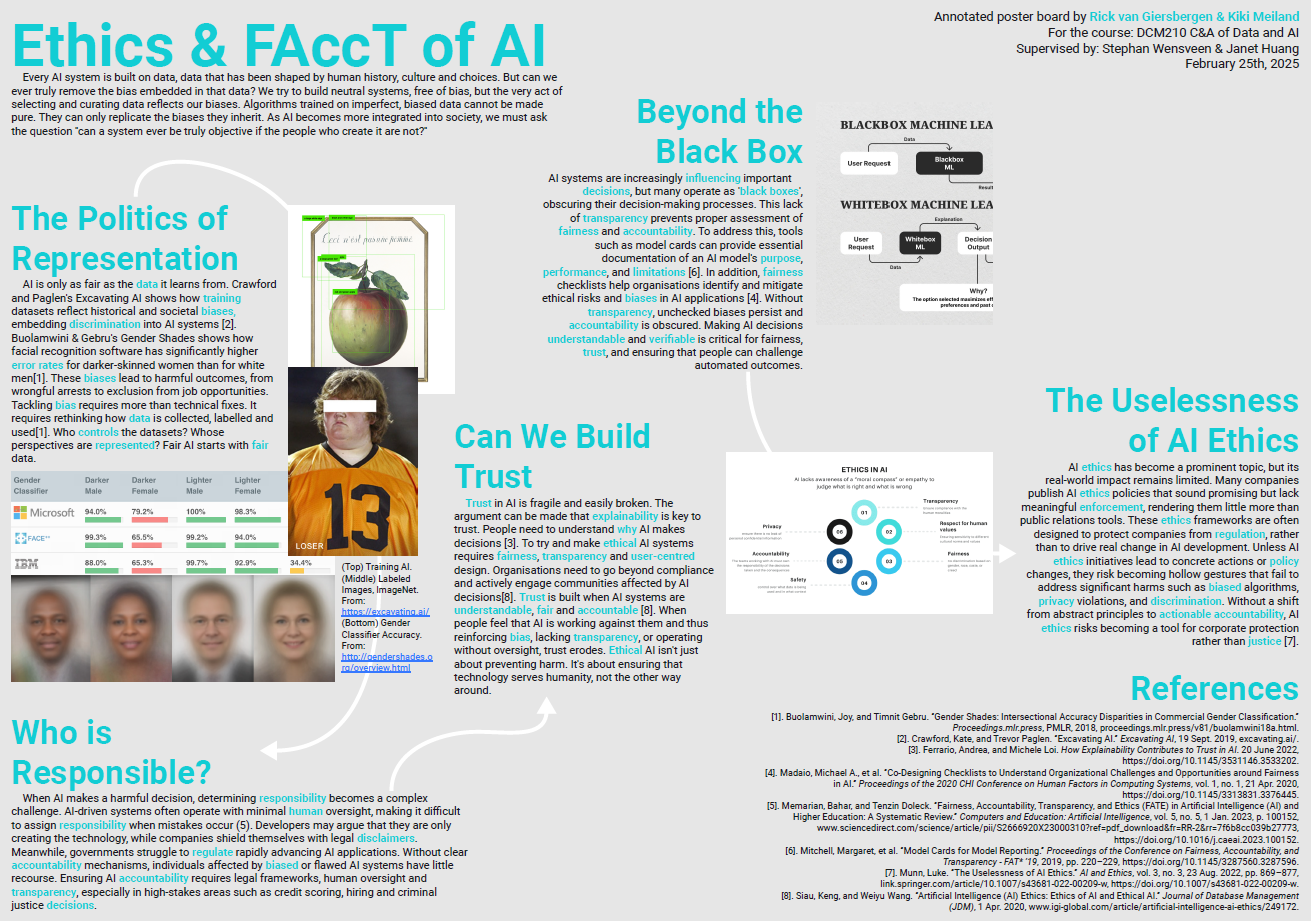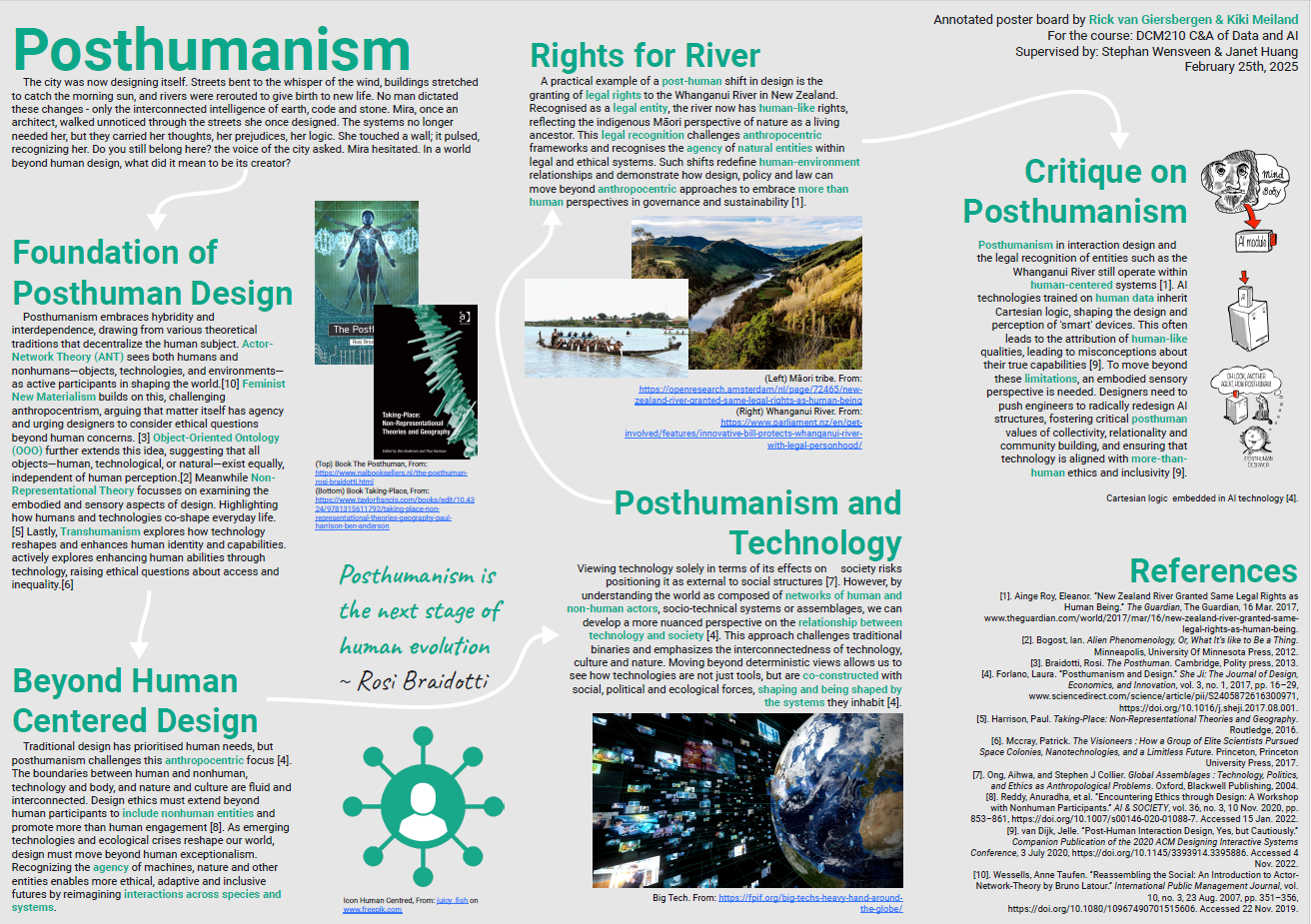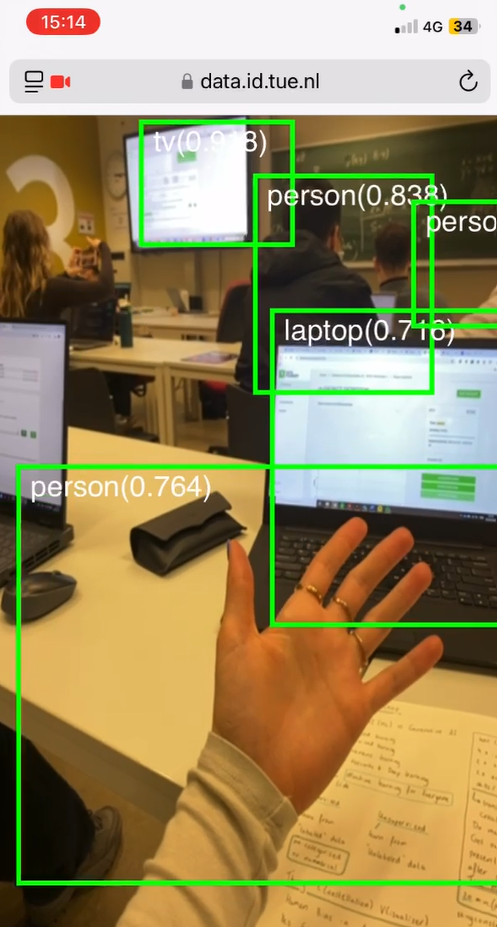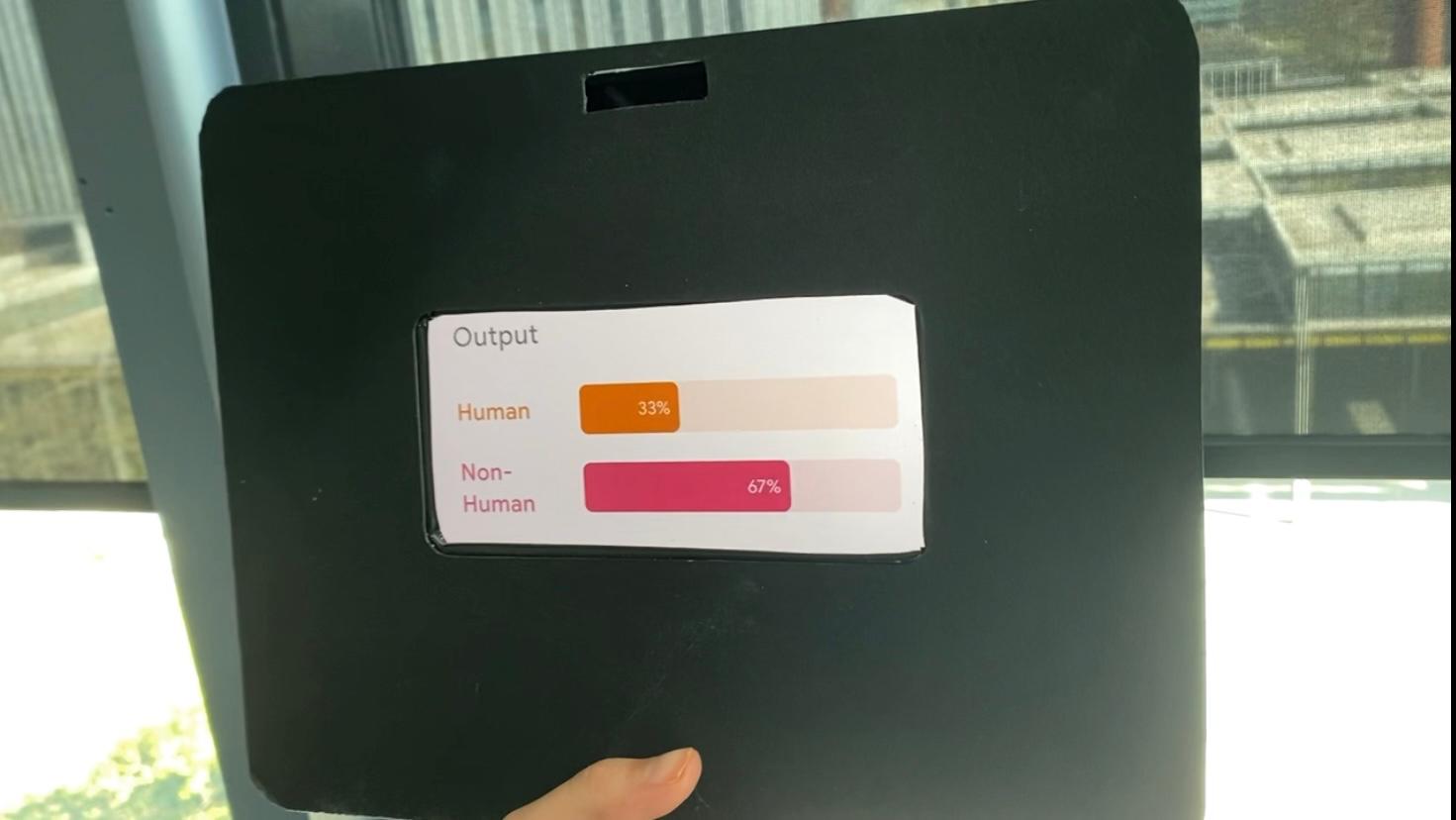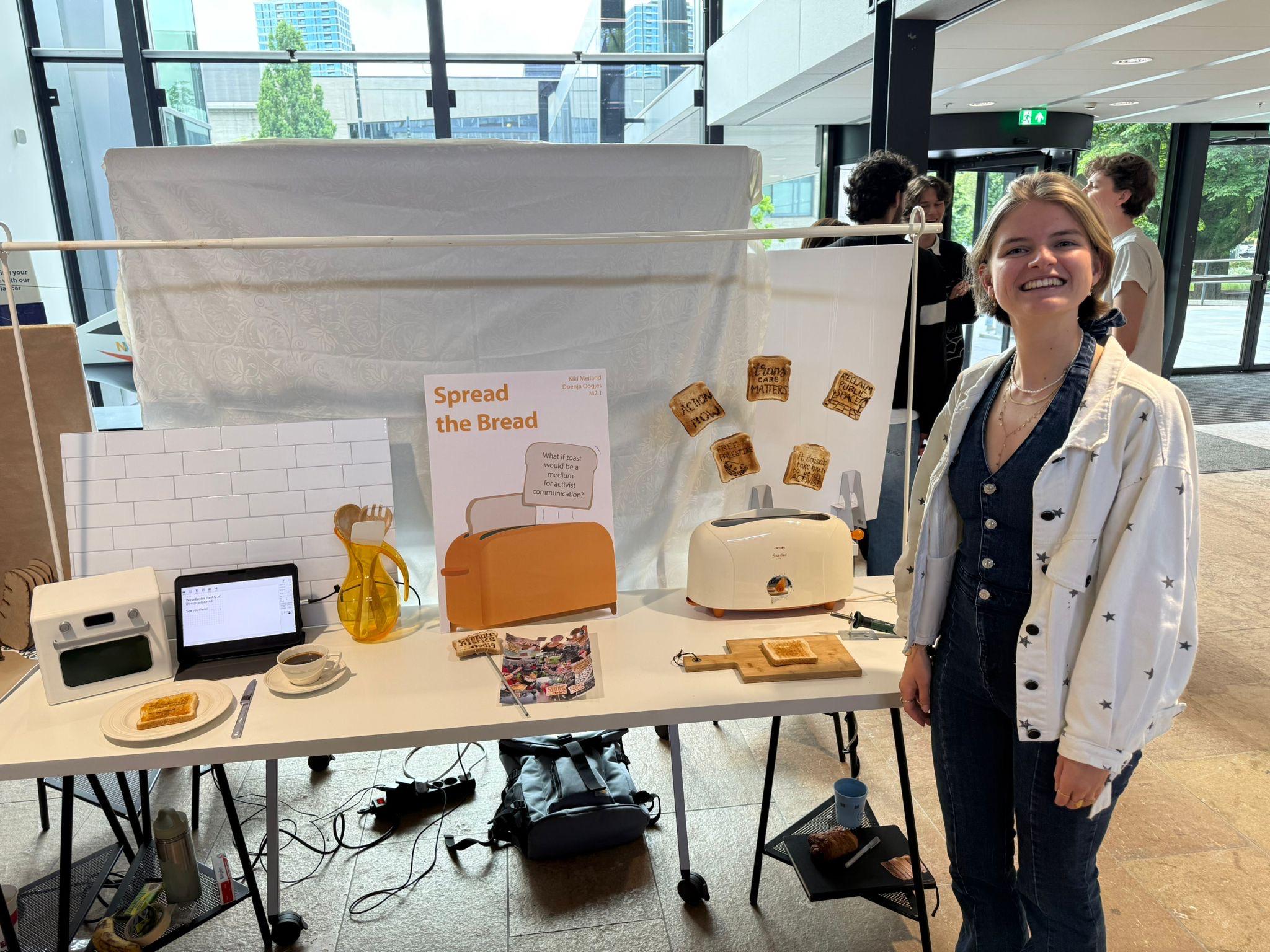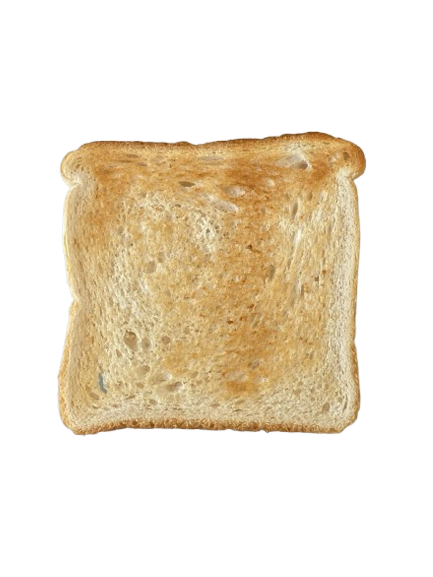Past
My development across all expertise areas throughout the master, leading up to my Final Master Project (FMP)

Creativity & Aesthetics
This could be deemed my strongest Expertise Area. Due to my creative, associative nature, I thrive in the ideation and conceptualisation phase. I use exploratory (lo-fi) making and sketching to develop, flesh out, and communicate concepts and interactions, applying a thinking-through-doing attitude and continuous reflection on action (M1.1, M1.2, M2.1).
I have developed my skill and sensitivity in seeing connections between elements of the design (process), materials, interactions, and theory, and can build and communicate strong design narratives as a result (UME, M1.1).
I have developed an understanding of the value in aesthetics beyond beautiful, professional appearances, since they inform how people interact with, perceive, and understand design, technology, and the world around them (DPoIoT, C&AoD&AI, MoT). Linking to User and Society, I often share creative and reflective practices with others through my designs.
Related courses/projects
- Group project – The Itineration Station (M1.1)
- Individual research project – Agency in the Climate Crisis (M1.2)
- Preparatory project – Spread the Bread (M2.1)
- Unexpected Material Engagements (UME)
- Designerly Perspective on IoT (DPoIoT)
- Creativity & Aesthetics of Data & AI (C&AoD&AI)
- Matter of Transformation (MoT)
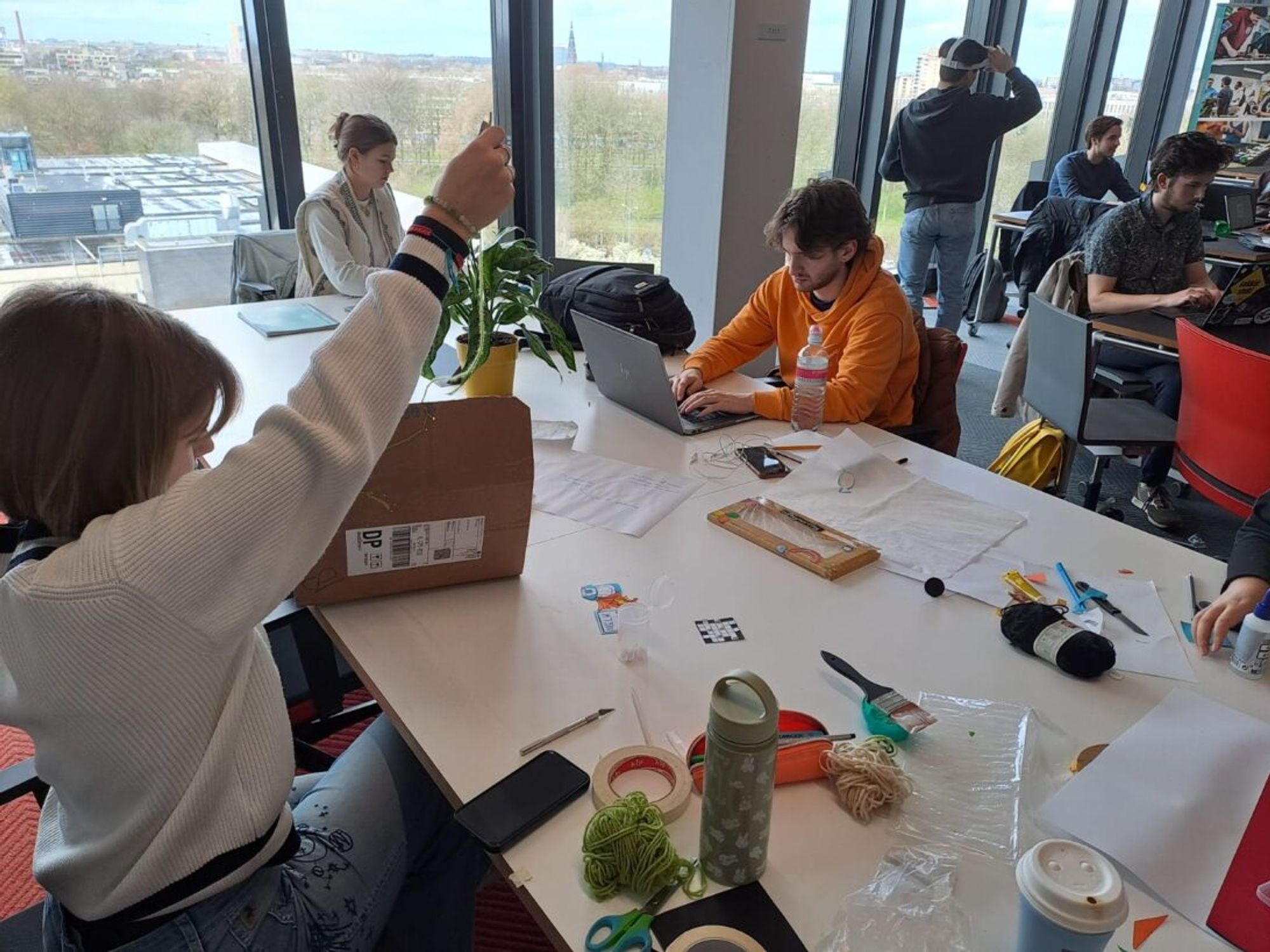

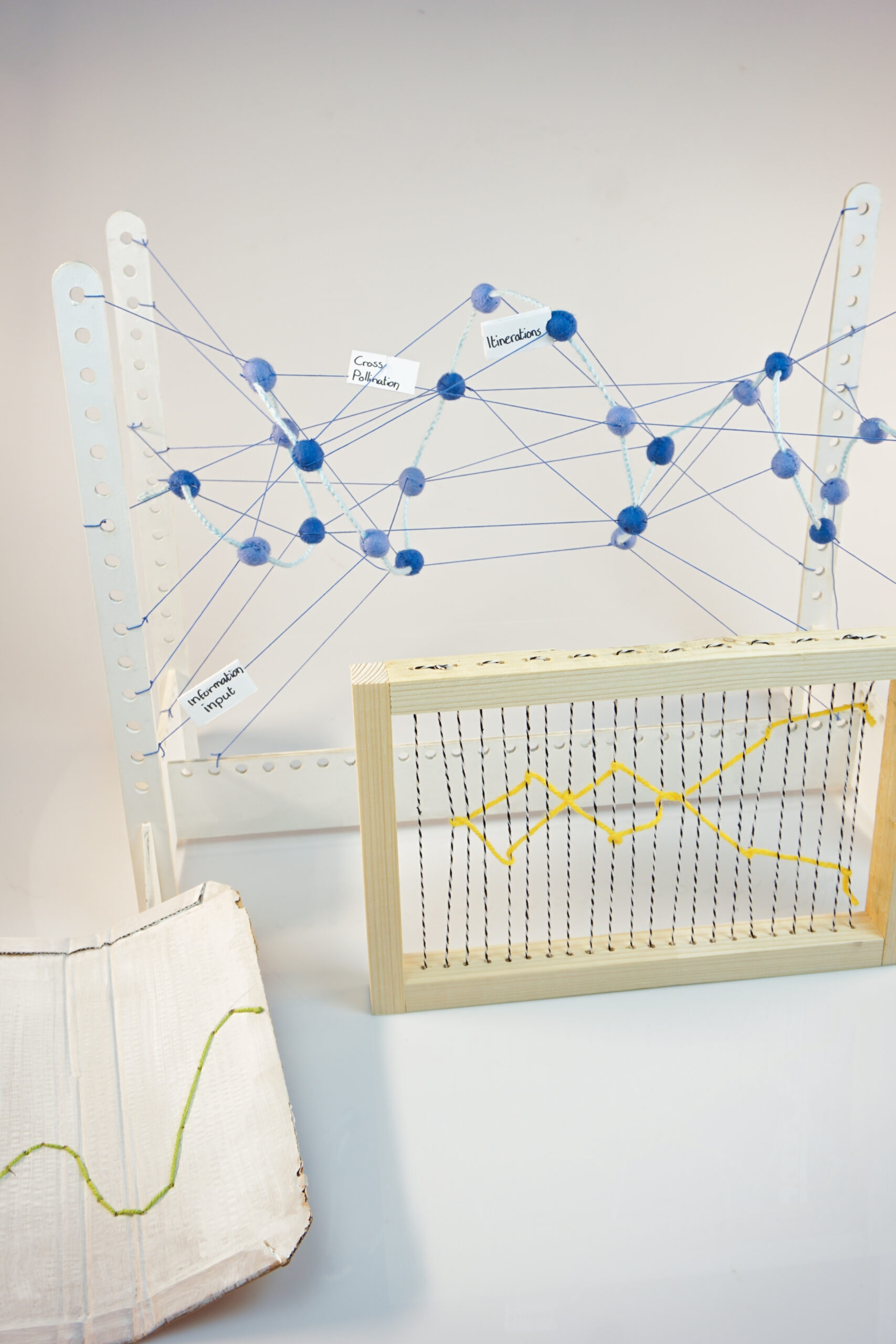
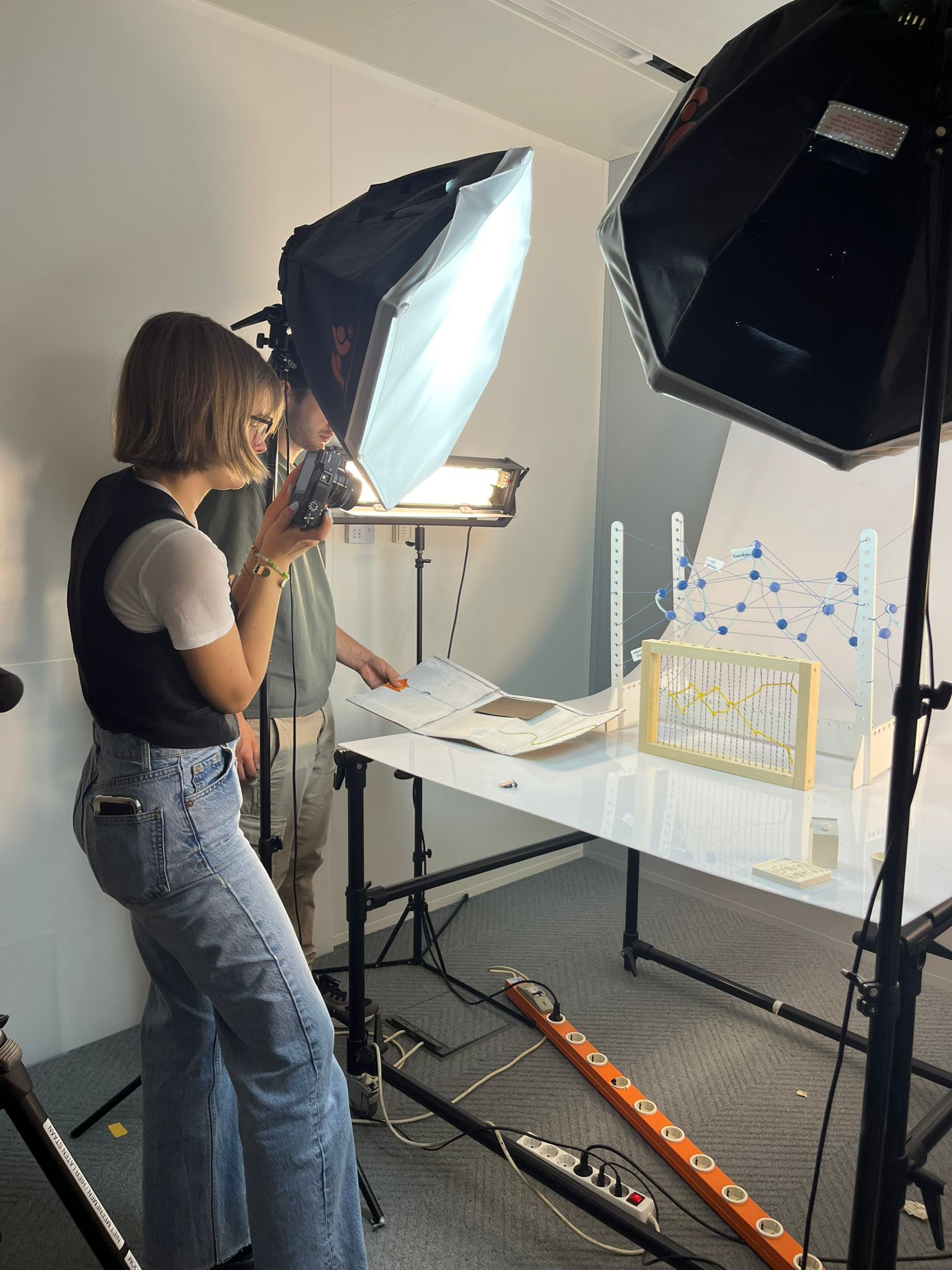


User & Society
As introduced in C&A I often apply a participatory approach, directly inquiring with people to inform, evaluate or validate my designs. In doing so, I developed my skills in gathering and analysing qualitative data (CDR). I often immerse myself in the context I’m designing for through situated fieldwork, supported by approaches such as (auto)ethnography and an inquisitive, humble attitude (DfSI, UME).
I explored and developed my knowledge and sensitivity of ethics (IM) and the consequences of design and aesthetics on individual and collective practices, society, and the world, including more-than-humans (DfSI, C&AoD&AI, MoT, UME)
Lastly, the topics of my designs, or the contexts in which I situate my projects, are centred on societal trends and developments, such as climate change and anxiety, use and reuse, the ethical implications of the widespread application of AI, and activist expression (M1.1, DfSI, IM, M2.1).
Related Courses/Projects
- Constructive Design Research (CDR)
- Design for Social Innovation (DfSI)
- Unexpected Material Engagements (UME)
- Creativity & Aesthetics of Data & AI (C&AoD&AI)
- Individual research project – Agency in the Climate Crisis (M1.2)
- Matter of Transformation (MoT)
- Preparatory project – Spread the Bread (M2.1)
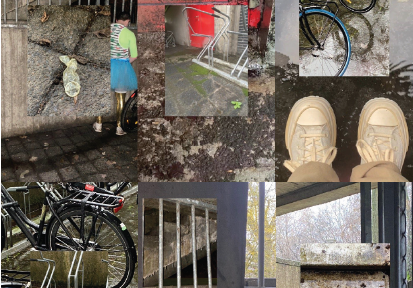
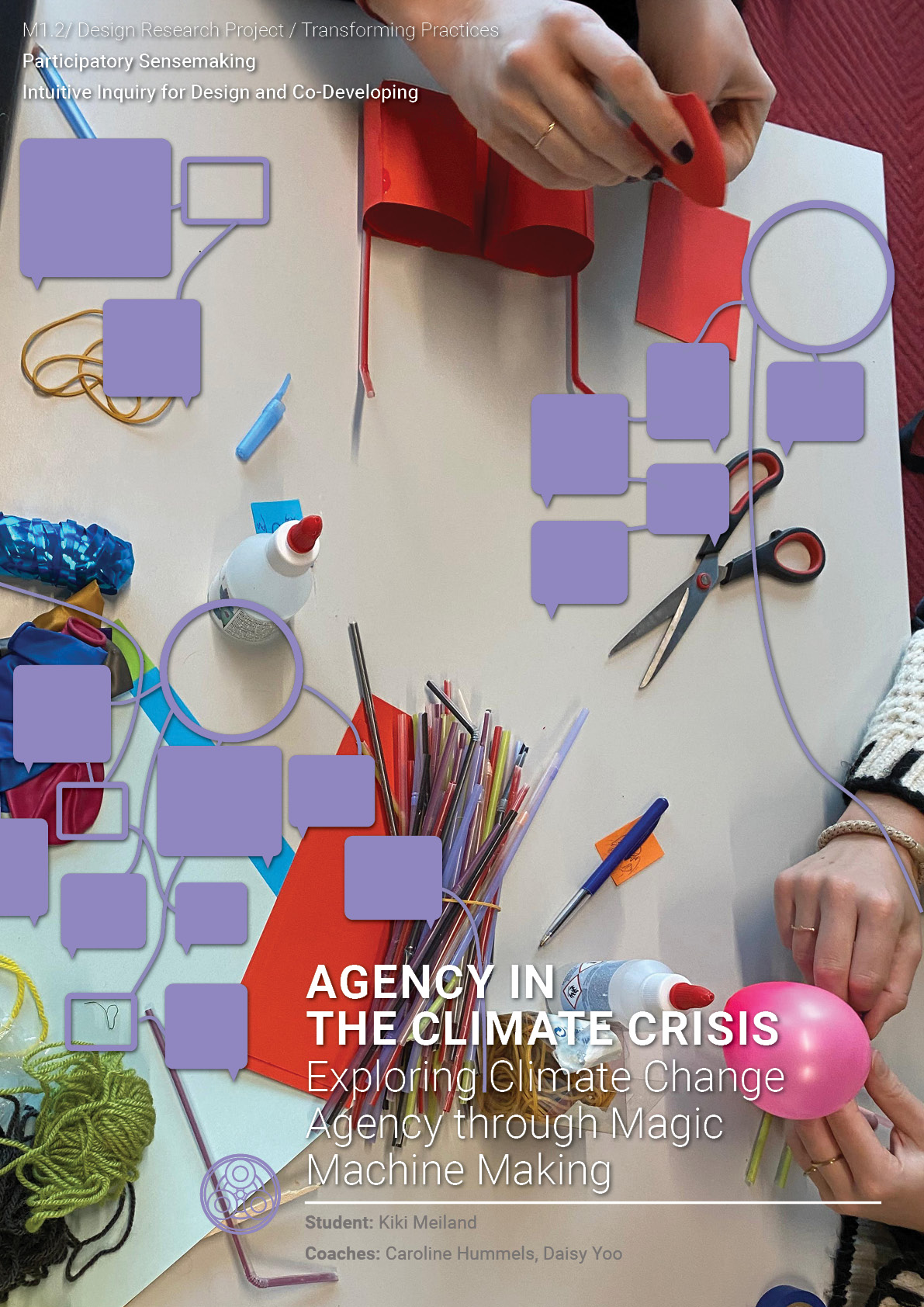
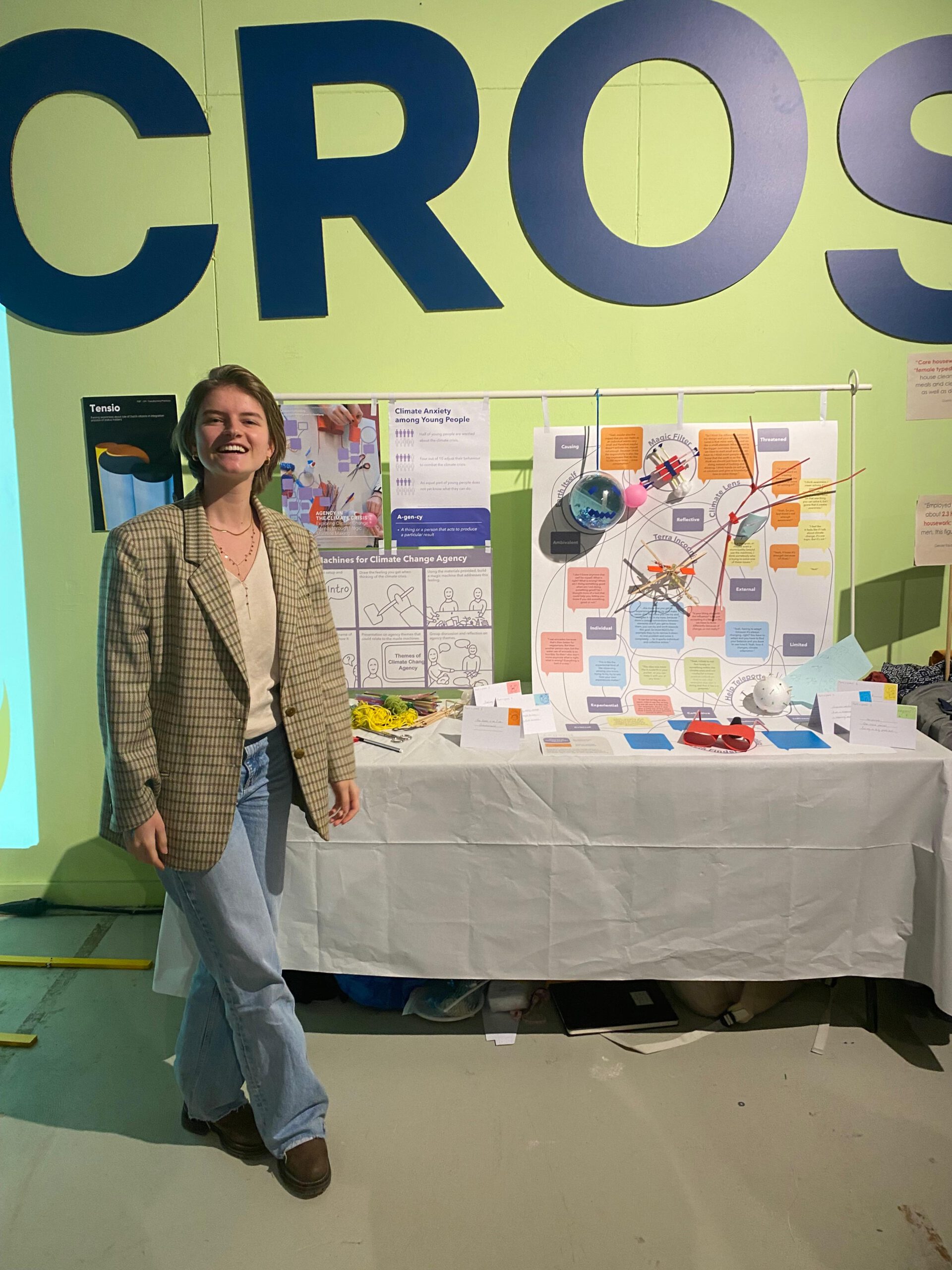
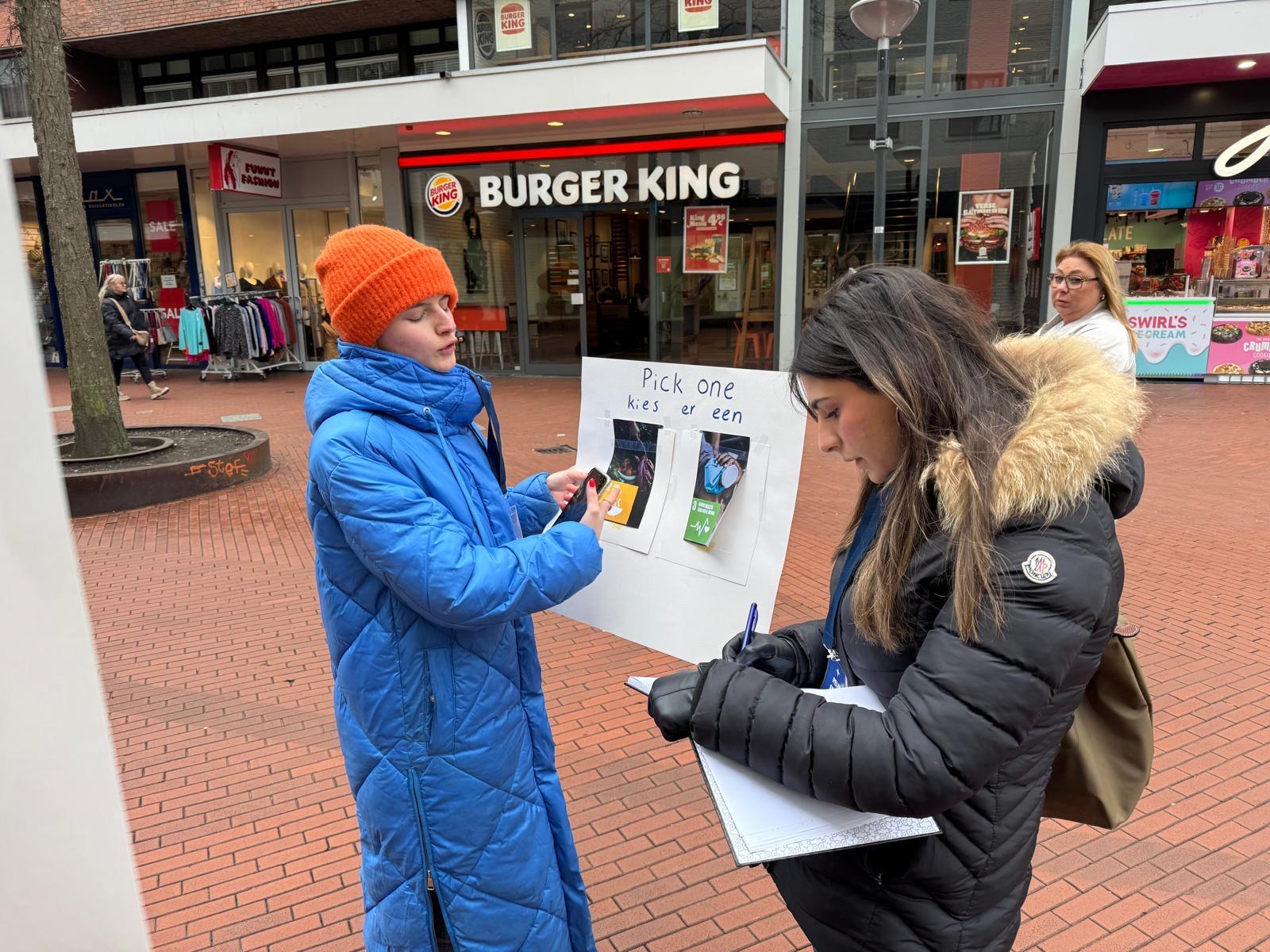
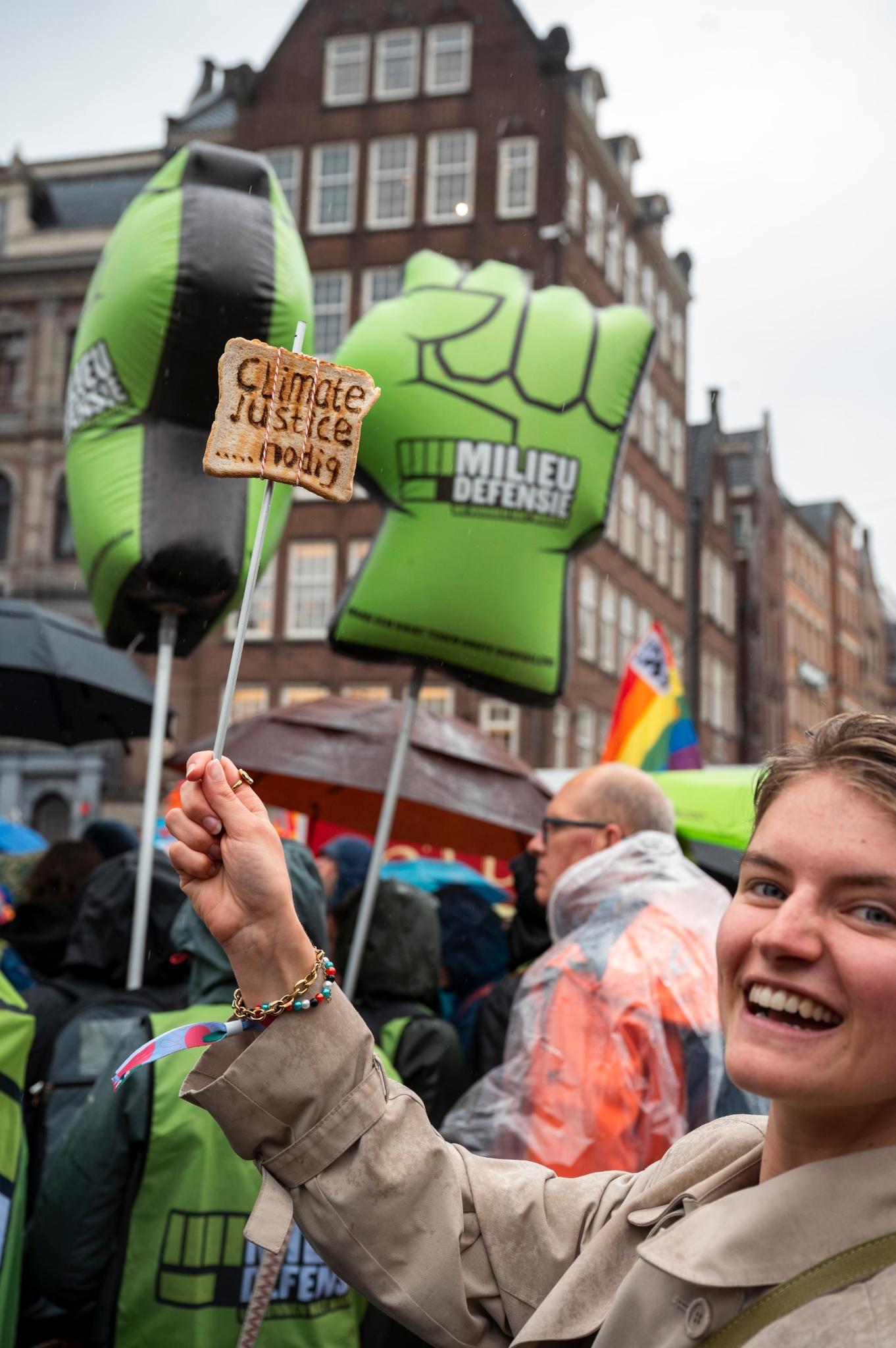
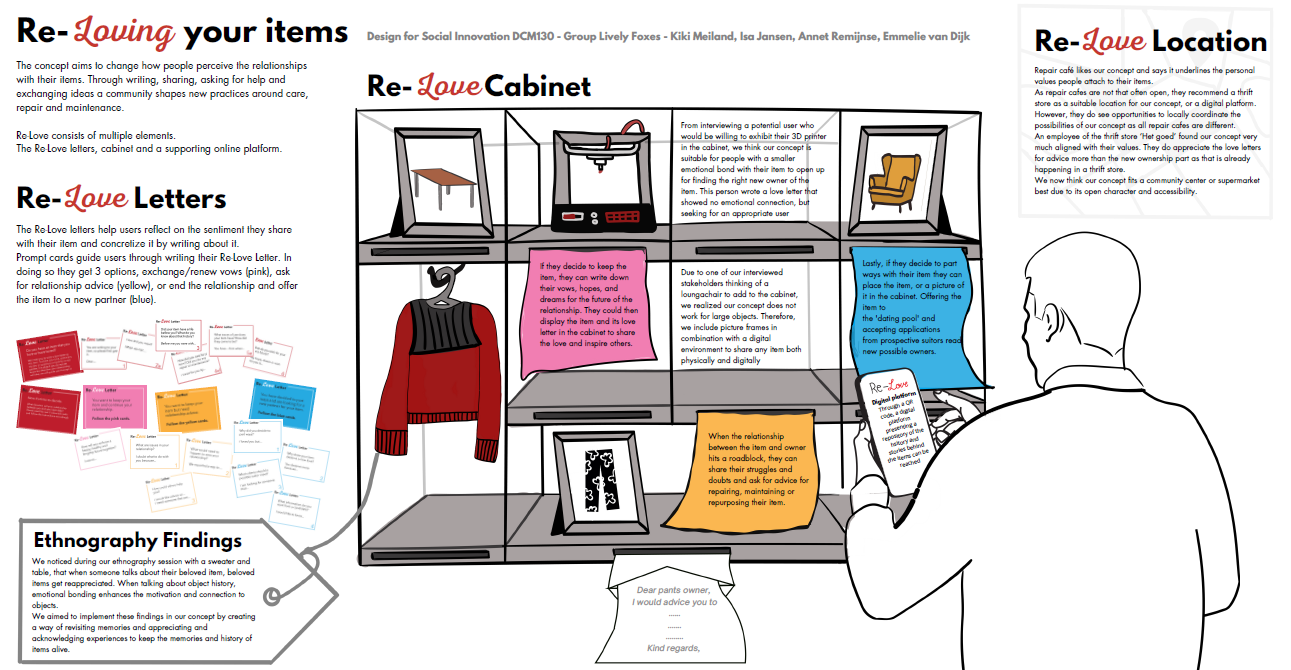
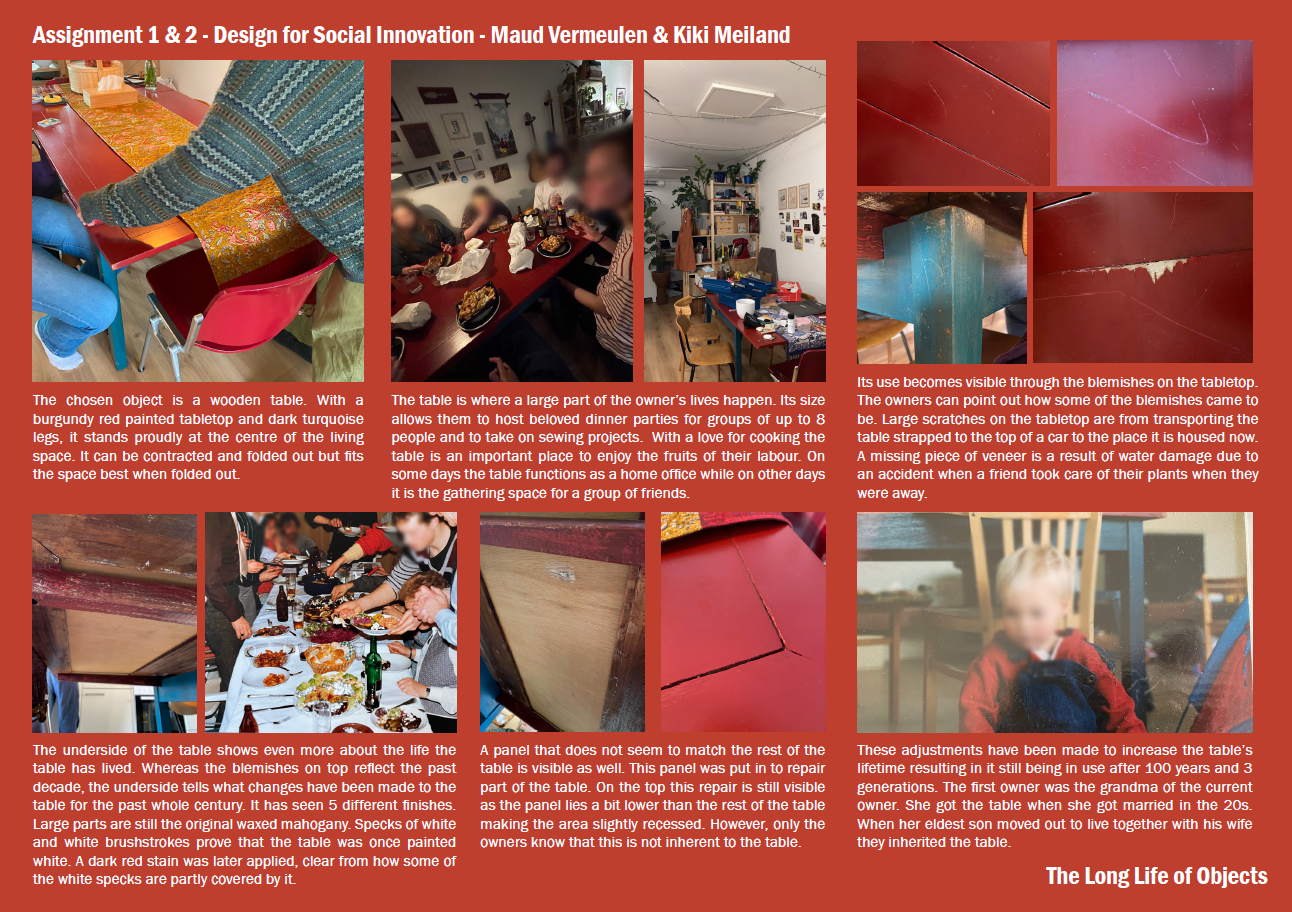
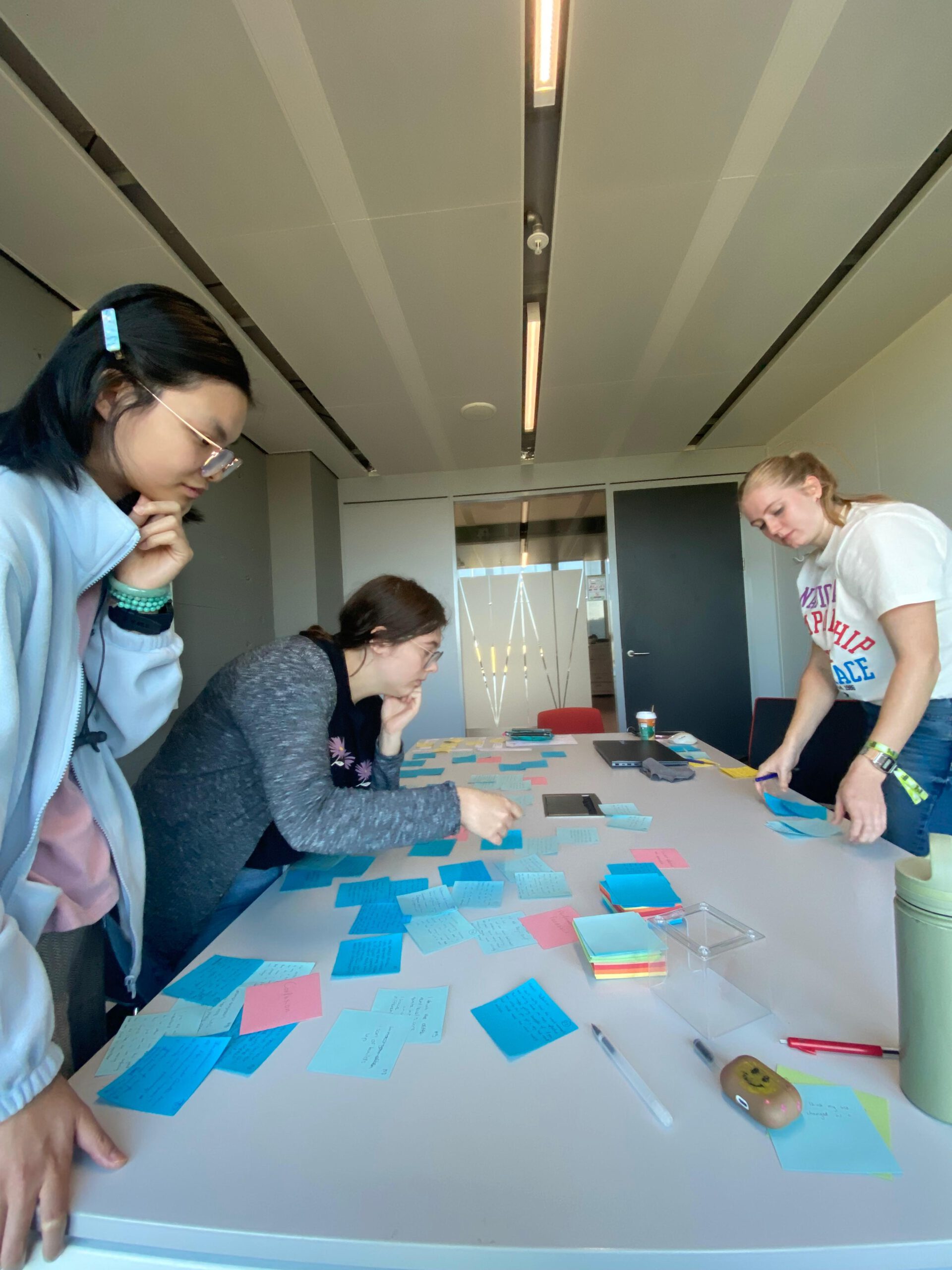



Technology & Realisation
To effectively communicate my designs and make concepts experienceable, I apply a variety of technologies. Throughout the master I have developed my skills in 3D modelling and printing, laser-cutting, woodworking, but also weaving and sewing (M2.1, DPoIoT, MoT, UME).
In my design practice, materials and technology do not only serve to realise the final design. I developed my attitude towards and knowledge of technology and materials through exploratory making and material-driven design, which inform and guide the development of my designs from the earliest stages (UME, M21). Moreover, questioning, critiquing, or reimagining technological advancements, such as AI and IoT products, their design, and implications, has developed my knowledge of and critical attitude towards such technologies (CDR, IM, C&AoD&AI, DPoIoT).
Related Courses/Projects
- Preparatory project – Spread the Bread (M2.1)
- Designerly Perspective on IoT (DPoIoT)
- Matter of Transformation (MoT)
- Unexpected Material Engagements (UME)
- Constructive Design Research (CDR)
- Interactional Morality (IM)
- Creativity & Aesthetics of Data & AI (C&AoD&AI)
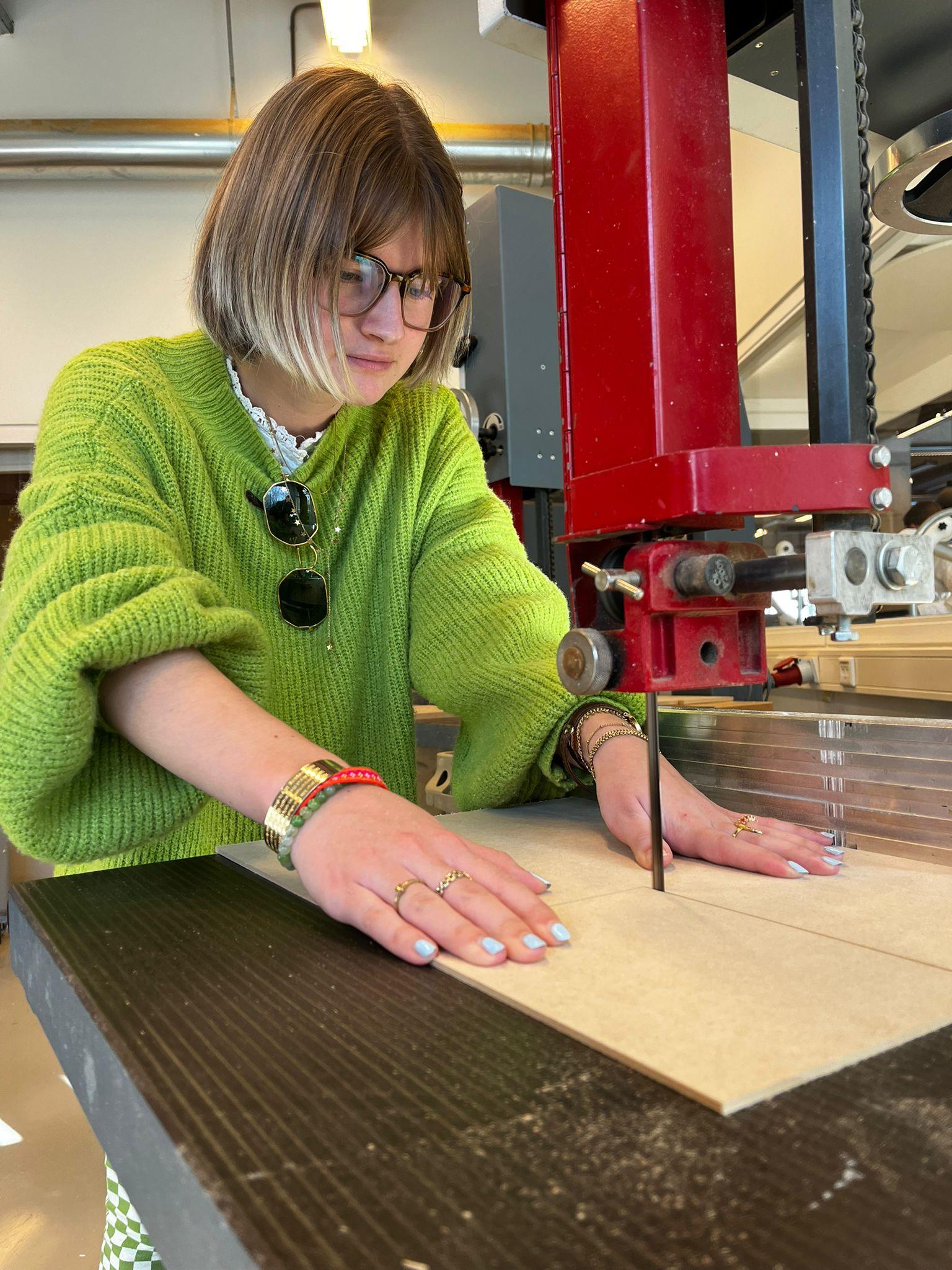
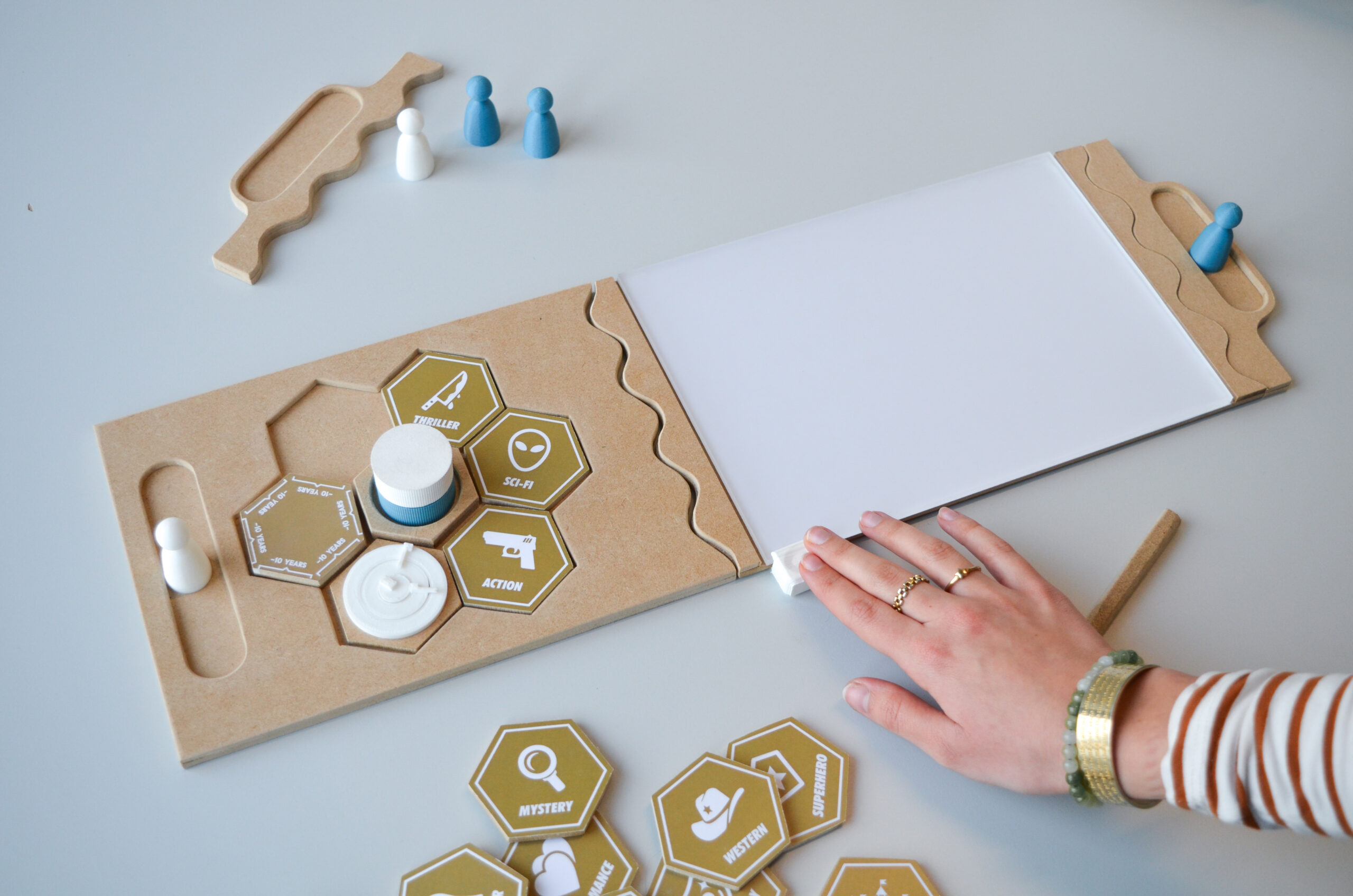
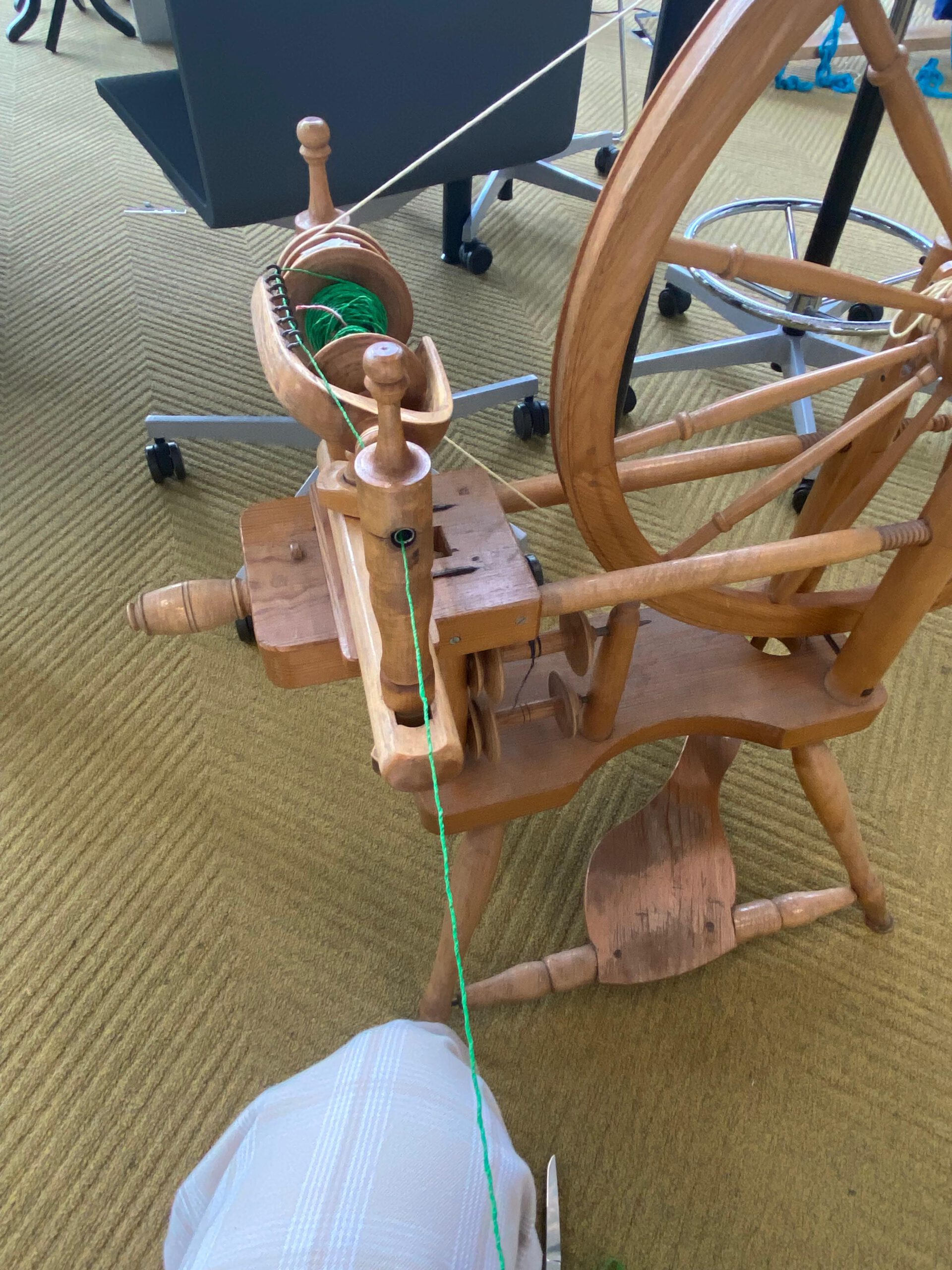
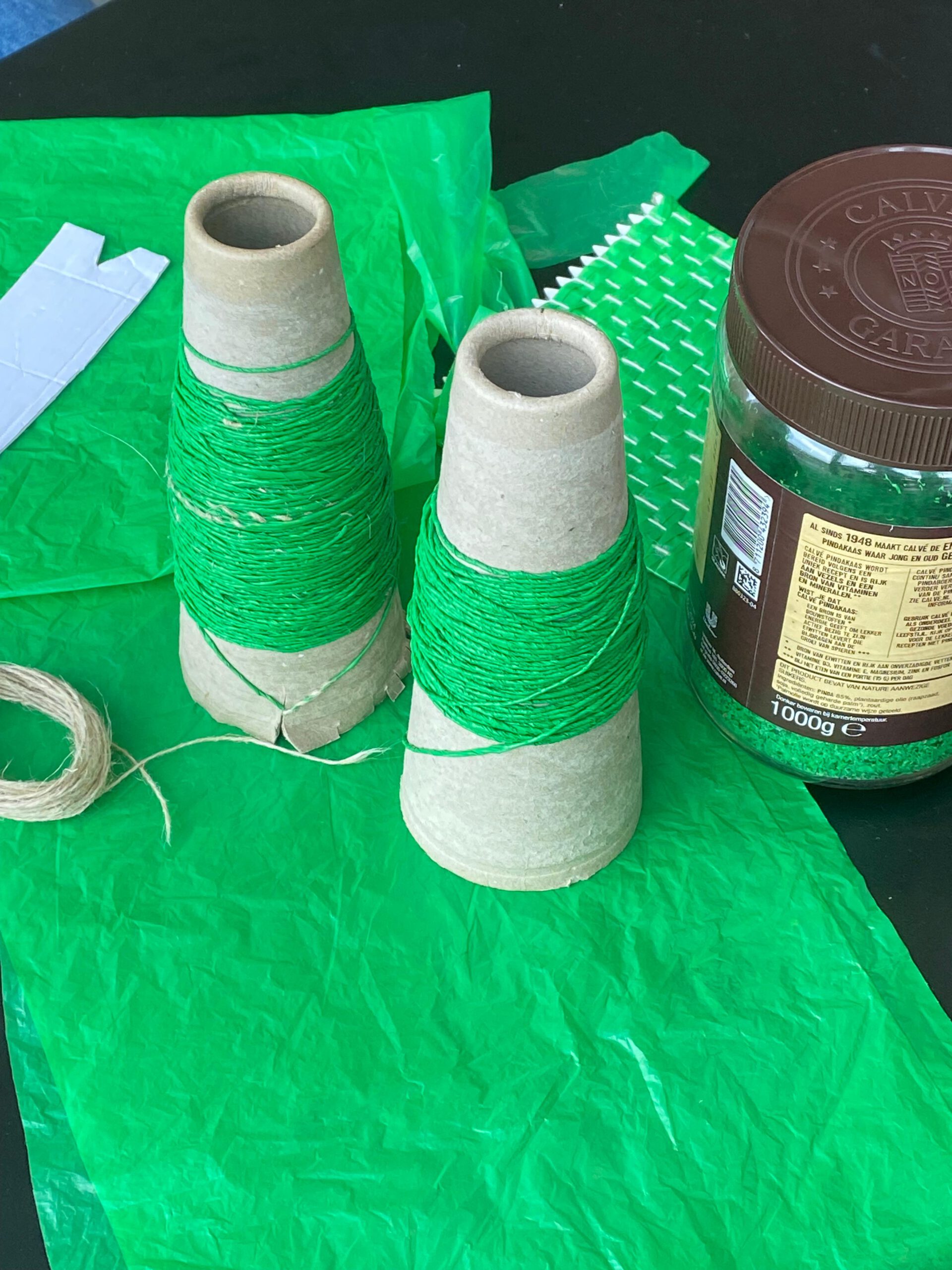
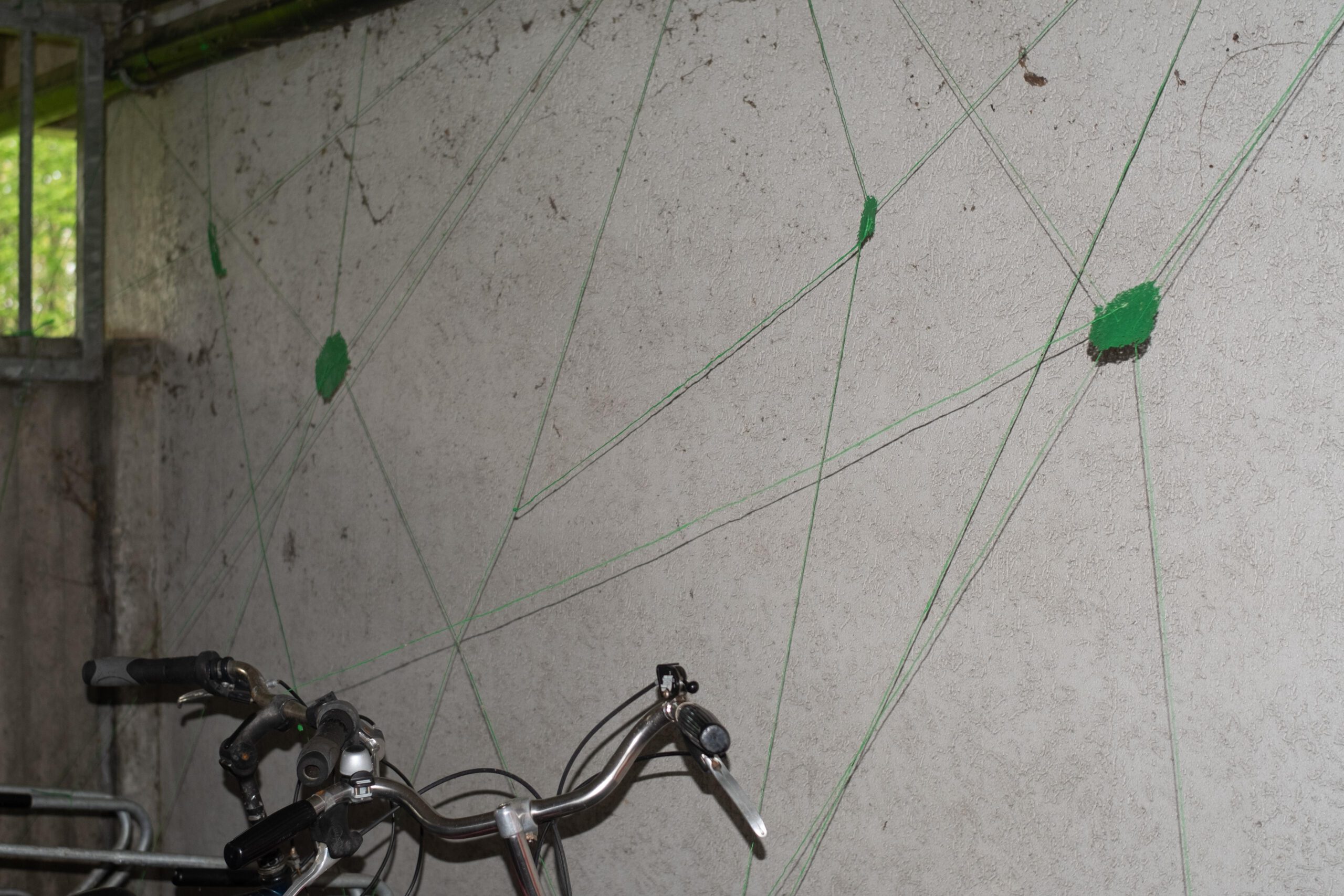
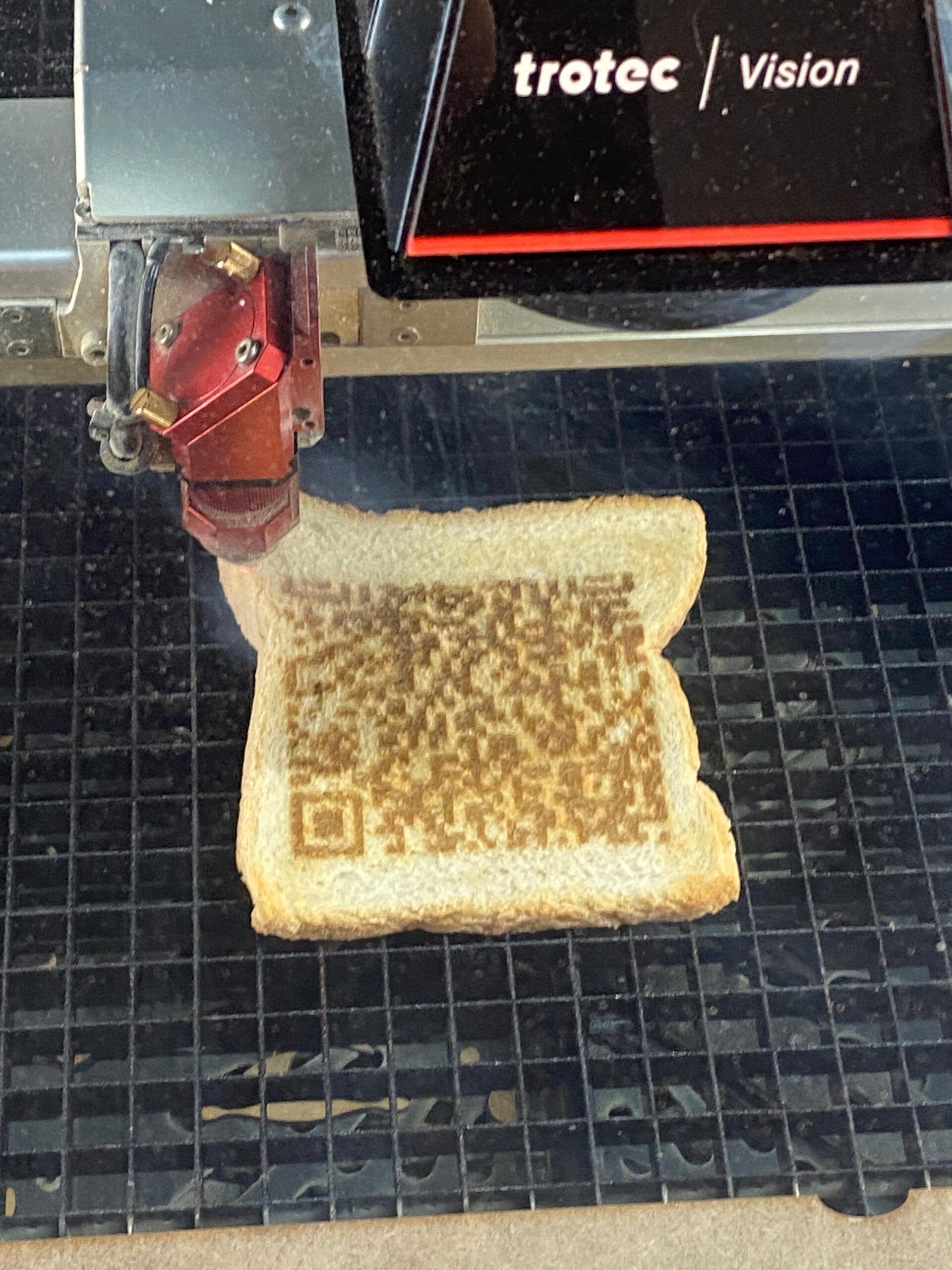
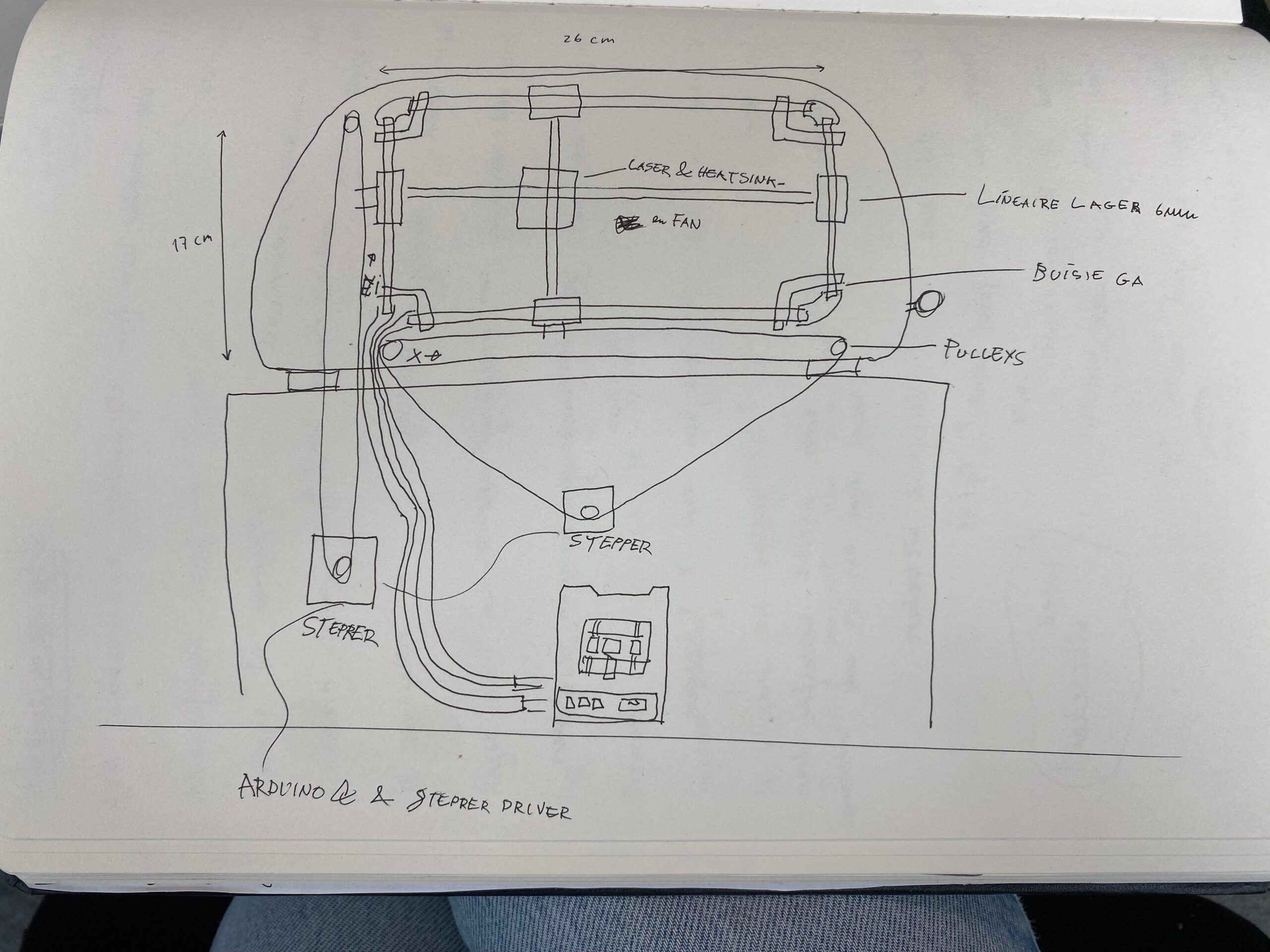
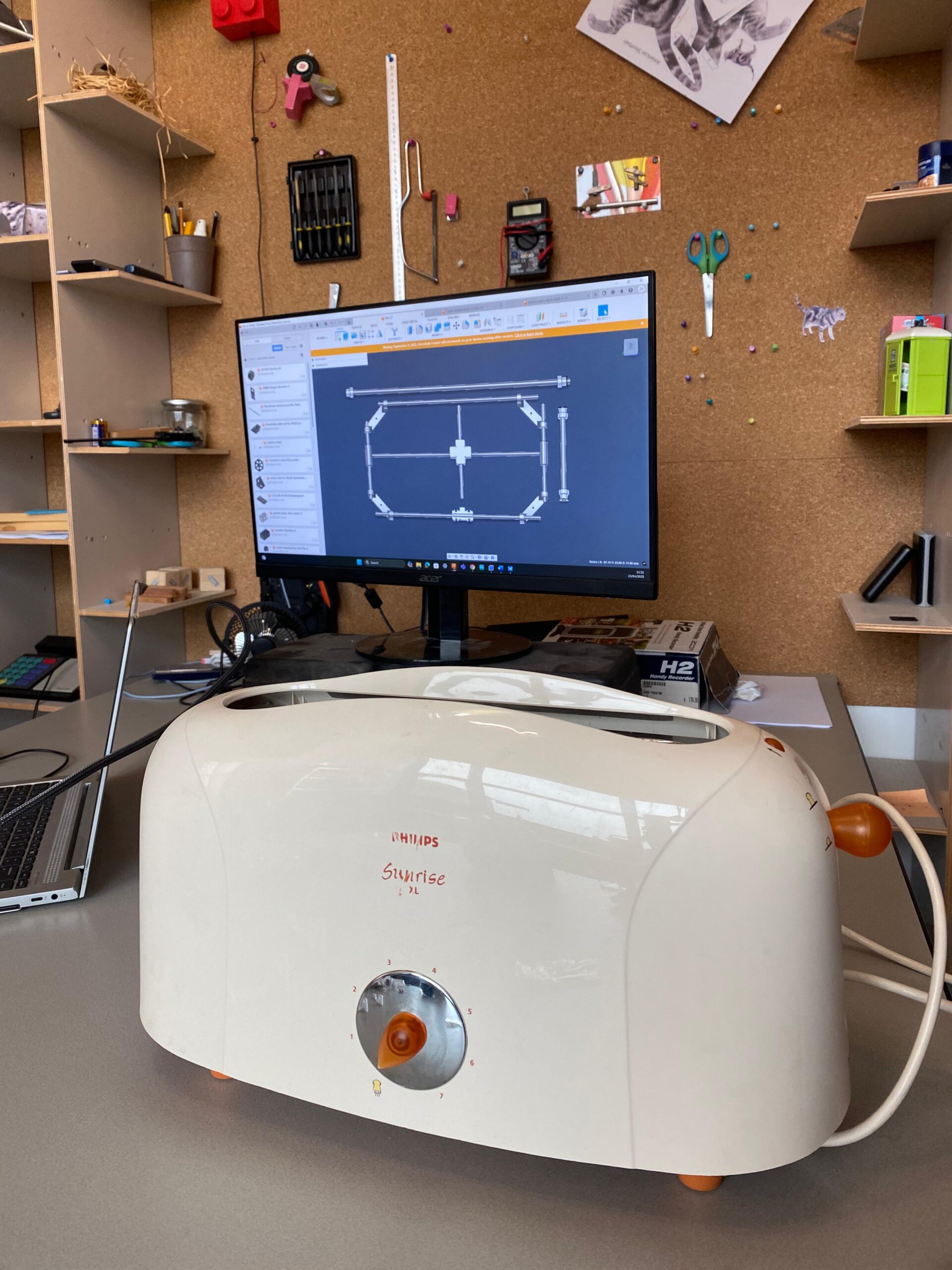

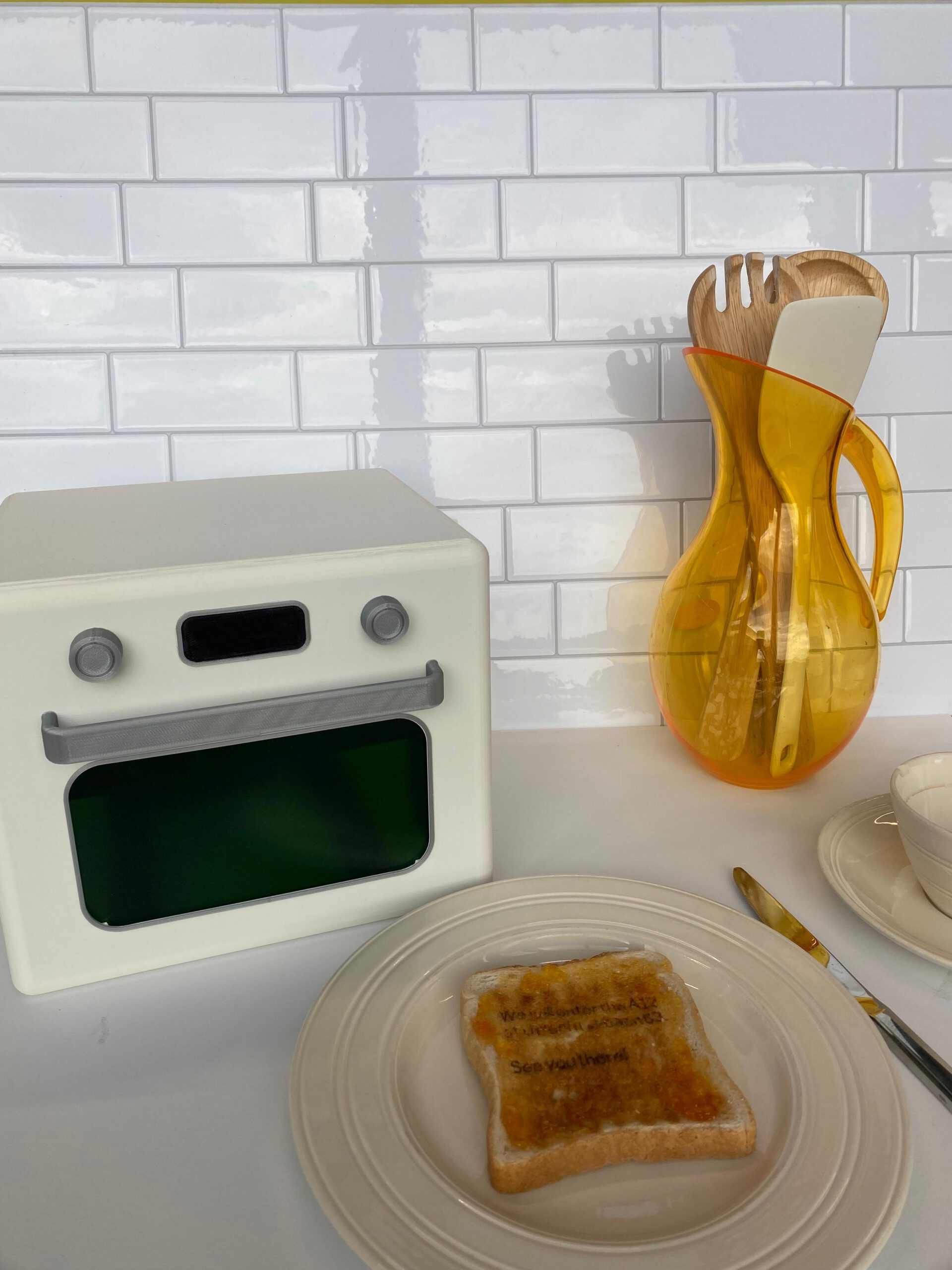
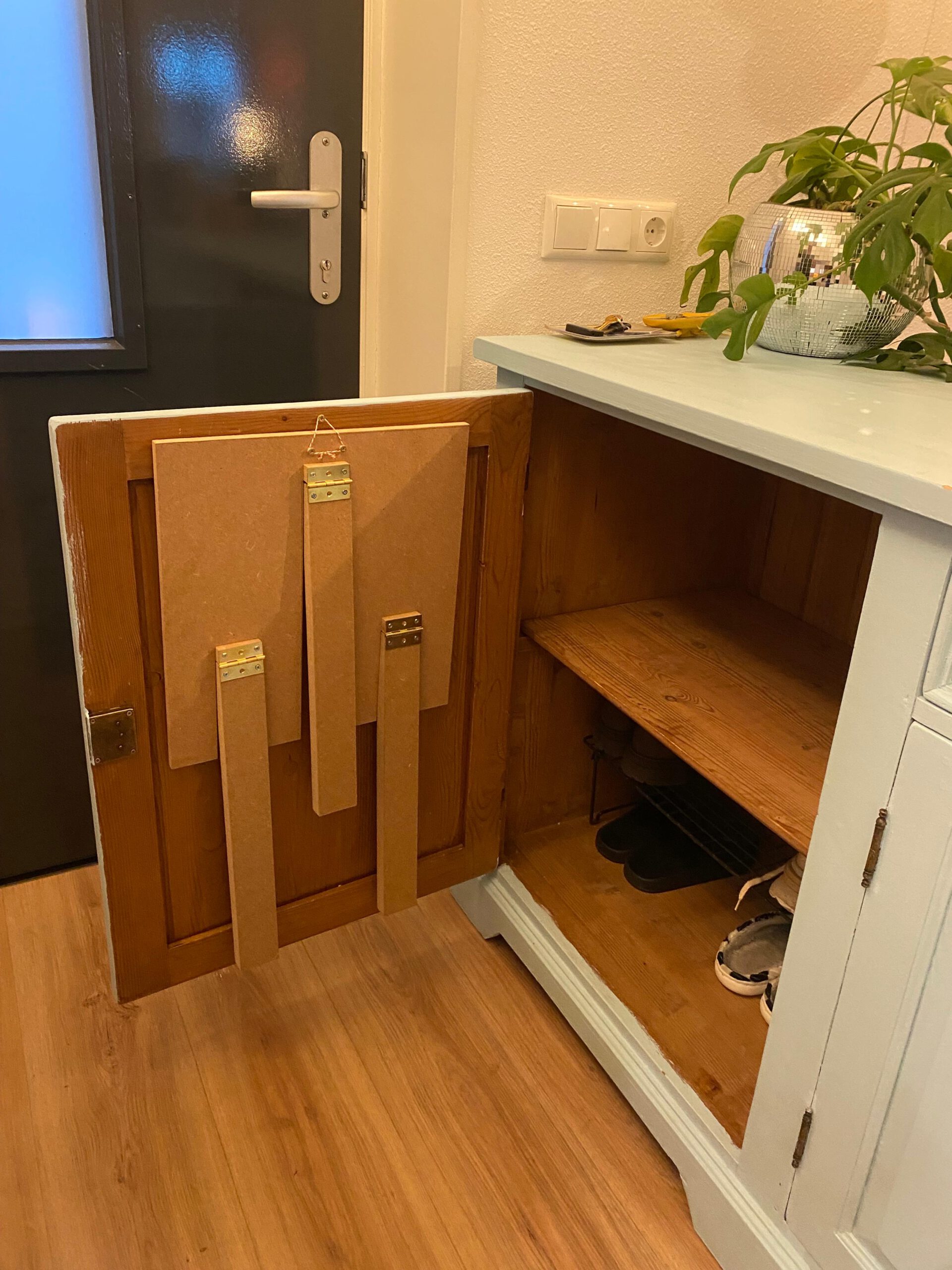

Business & Entrepreneurship
I developed a deeper understanding of and a critical attitude towards the current paradigm and related economic models (DfSI, MoT). Simultaneously, I developed my skills in designing and validating alternatives based on practices of care, repair, and reuse (DfSI). Applying real-life testing of a business case grounded in social innovation with stakeholders like a repair café and thrift store, as well as individual users (DfSI).
I developed designs to help a client facilitate connections and collaboration among stakeholders to rethink their practices (M11). Simultaneously, expanding my knowledge of the business models and organisational structures behind independent designers and design studios.
Through contact with organisations such as Milieudefensie Jong (M12, M21) and expert stakeholders, including active members of Extinction Rebellion, I developed my professional skills related to stakeholder involvement and management (M21).
Related Courses/Projects
- Design for Social Innovation (DfSI)
- Matter of Transformation (MoT)
- Group project – The Itineration Station (M1.1)
- Extracurricular project – IDefine
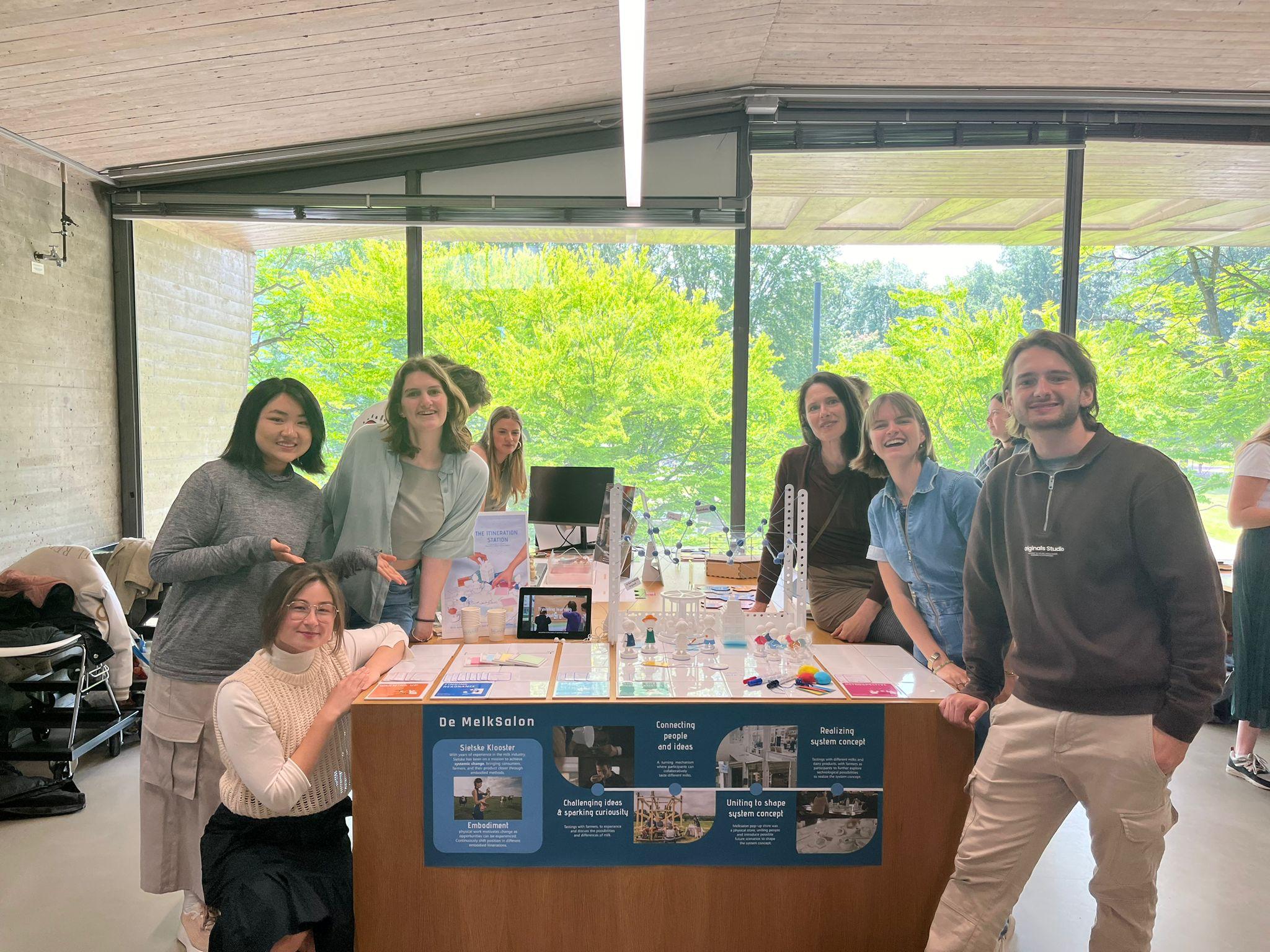



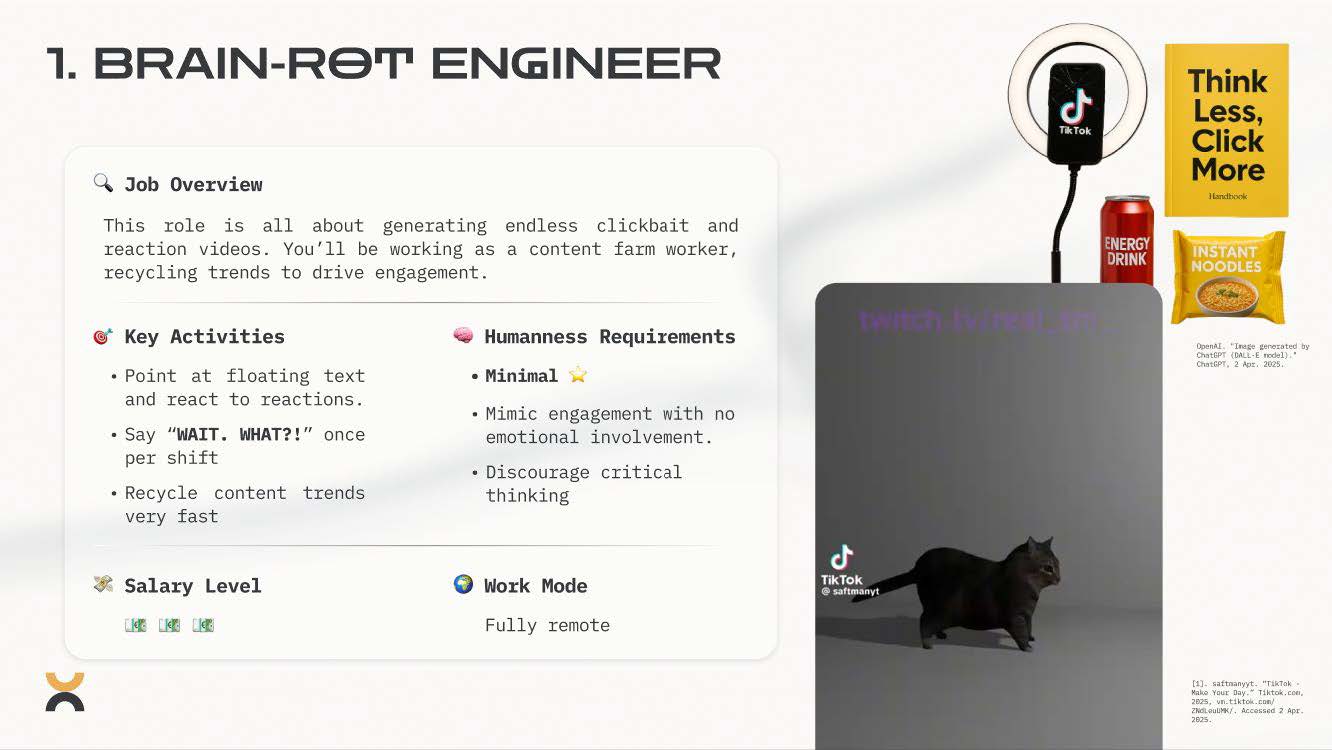
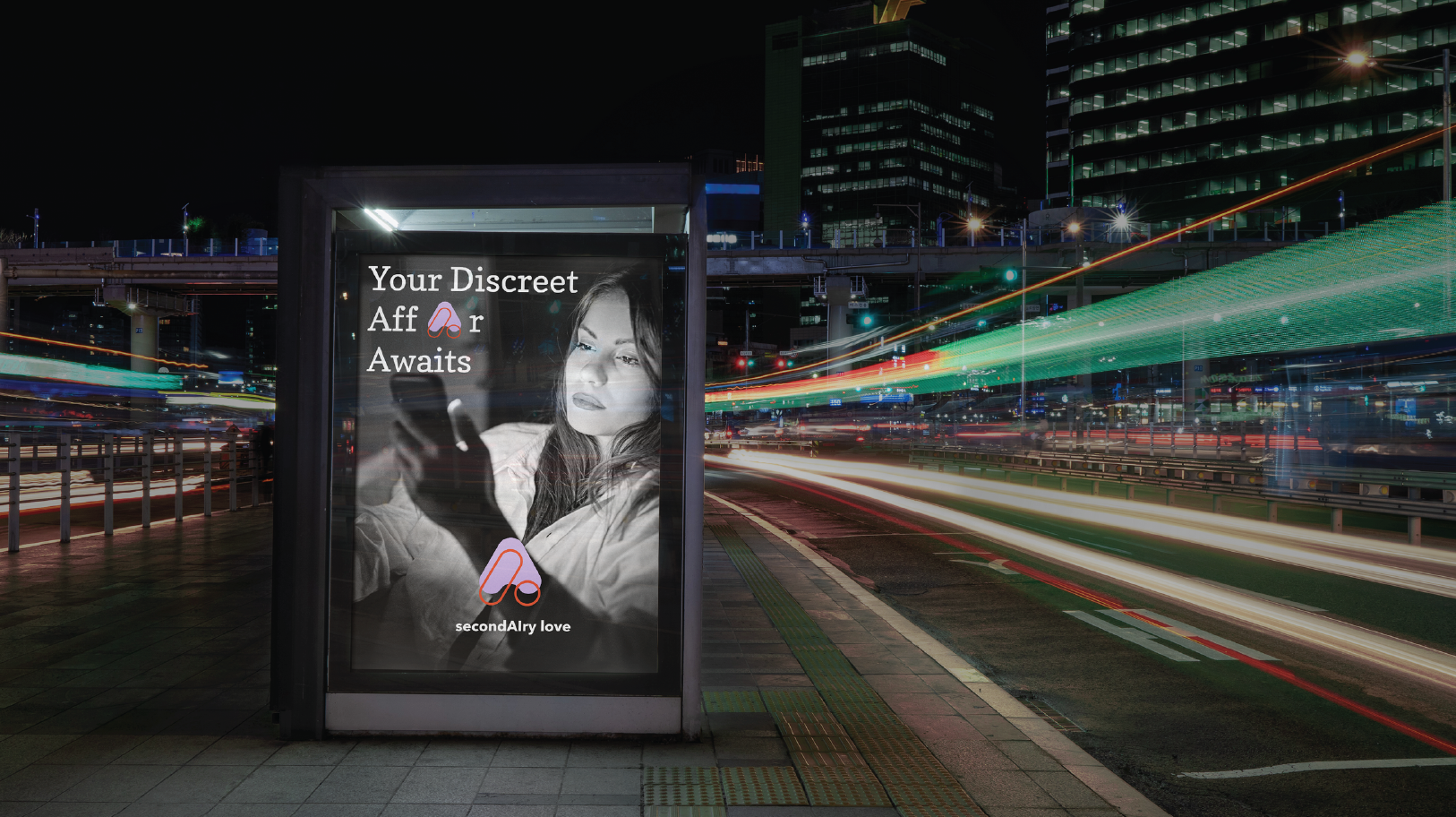

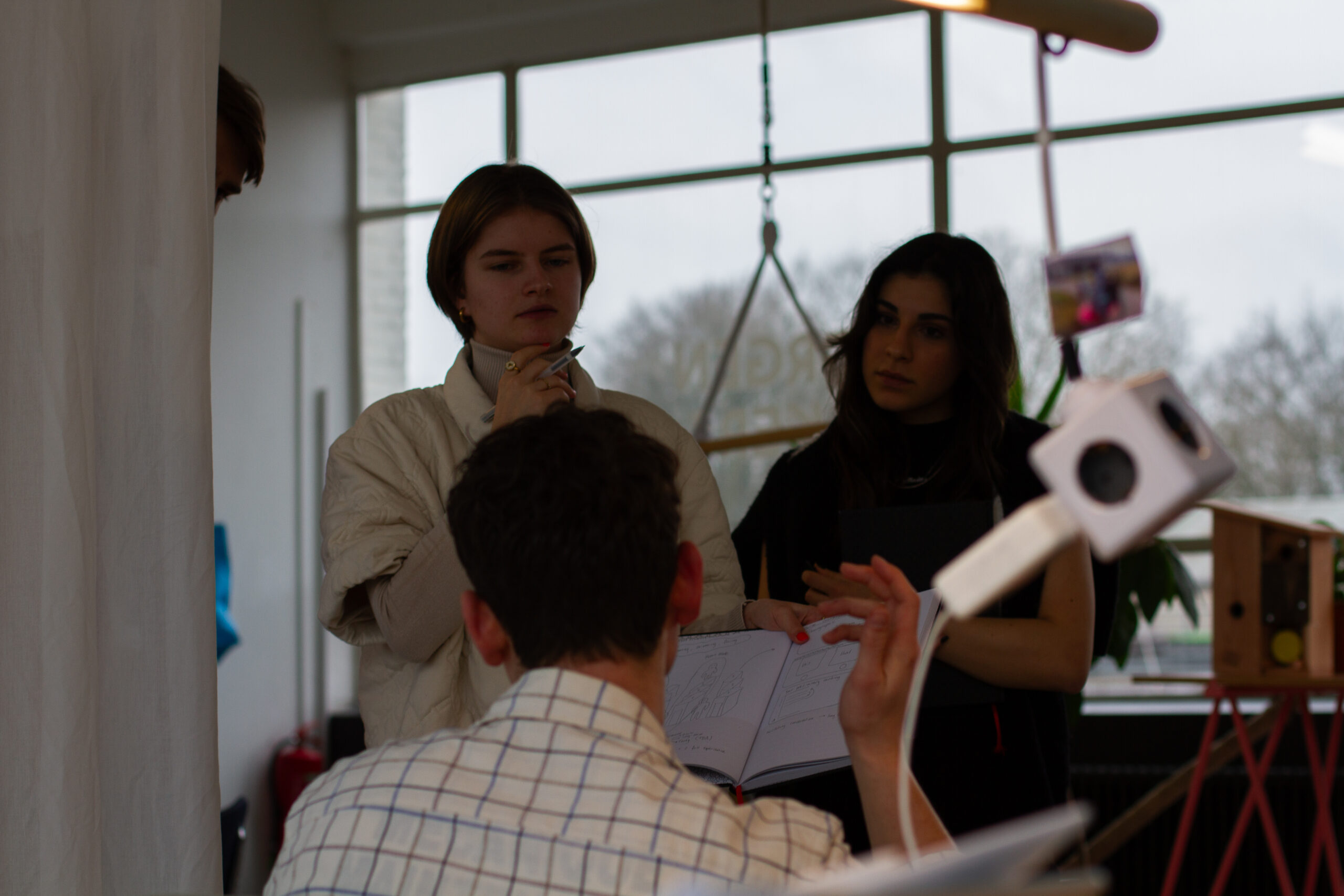


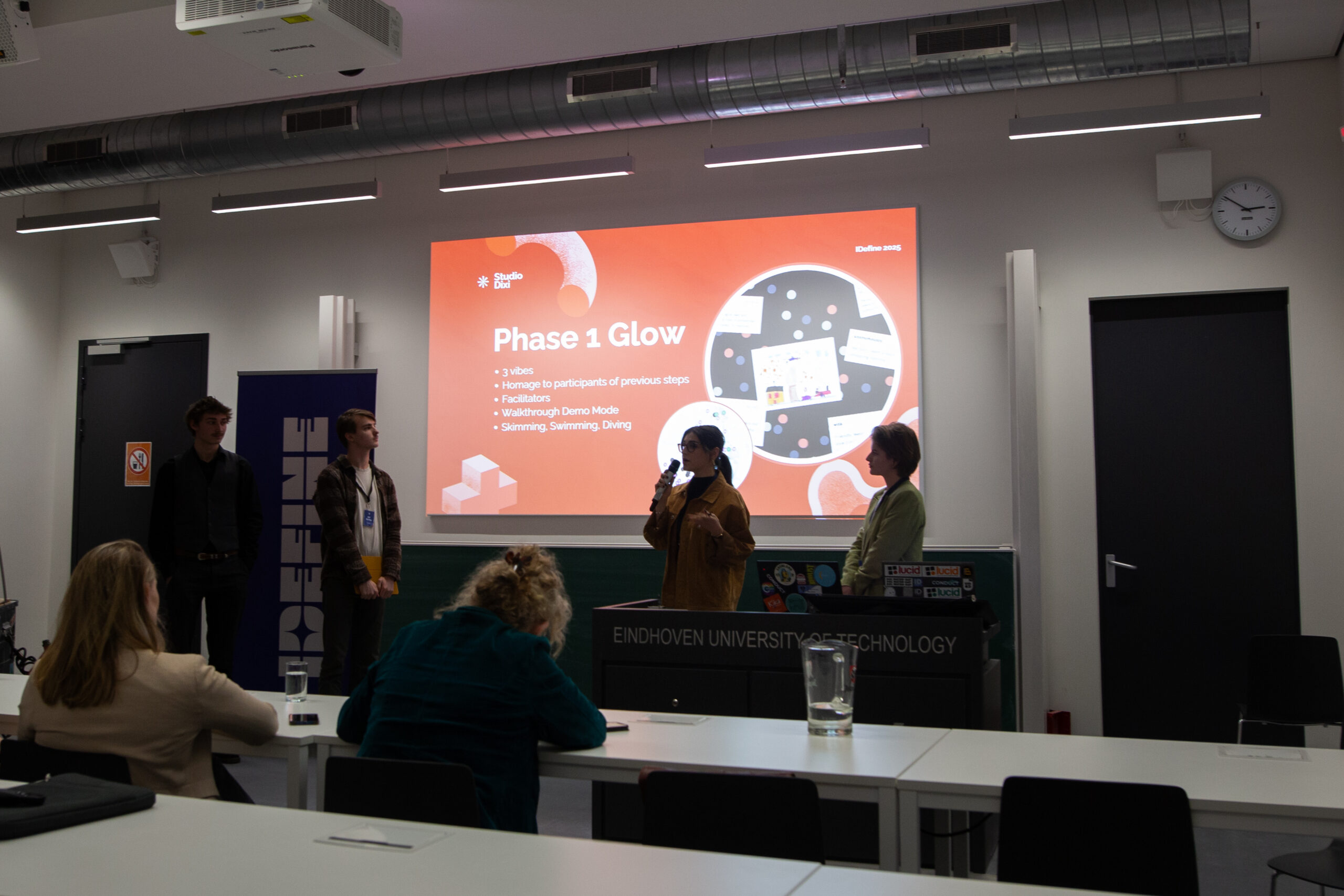
Math, Data and Computing
The design projects I worked on throughout the masters often focused on complex issues. However, I don’t tend to quantify these messy realities to arrive at a solution. Regardless, I developed my competence related to math, data and computing throughout the master. I developed my coding skills using Twine to create interactive stories exploring people’s attitudes towards generative artificial intelligence (CDR). Moreover, I gained knowledge and skills in using existing datasets and self-generated input to generate new data within the Data Foundry infrastructure, and developed my attitude towards the meaningful use of subjective data and skills in training and using models like Teachable Machine (C&AoD&AI). Lastly, I developed my knowledge of and critical attitude towards Big Tech-managed communication, AI developments, related data structures, practices, social and moral implications and possible alternatives through research and speculative explorations (M21, IM).
Related Courses/Projects
- Constructive Design Research (CDR)
- Creativity & Aesthetics of Data & AI (C&AoD&AI)
- Preparatory Project – Spread the Bread (M21)
- Interactional Morality (IM)

